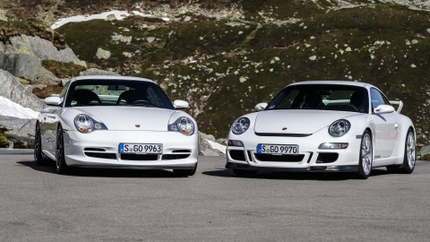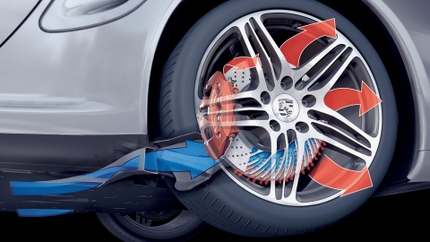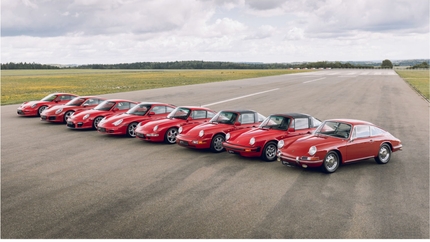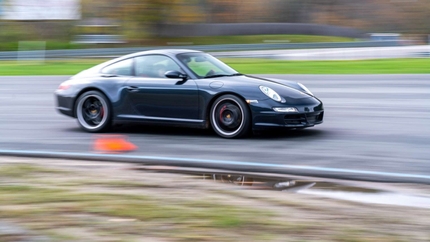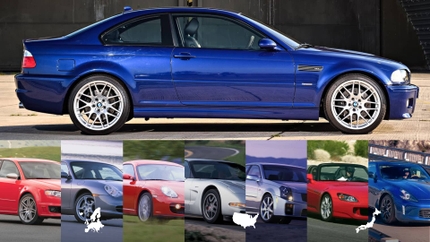- 01/31/2024
- 15 Min Read
- By: Christian Schaefer
Porsche 996 vs. 997 - An Early Water-Cooled Showdown
The first and second versions of Porsche’s modernized 911 model line represented two enormous leaps forward for the company at a time when money couldn’t be tighter. It was a move that worked well for Porsche, with each generation selling better than the next. Now, there's seemingly a 996 or 997 for sale anywhere you look, with all sorts of colors, engines, drivetrains, and body styles to choose from at pricing similar to a used M car. So which one do you go for?
A Brief Water-Cooled Porsche 911 History
After successfully competing with the world’s sports cars for thirty years, the original 911 had reached its engineering limits. Planning for the future, Porsche designers drew up an all-new 911 featuring a revolutionary engine (for the company), a larger but lighter chassis, and wholly revamped aesthetics. The latter point defines the 996 as its exterior stands alone from every 911 before or since. Many derided the newcomer before it got to our shores, disowning it before ever seeing it in person, but feeling changed quickly once butts were in seats.
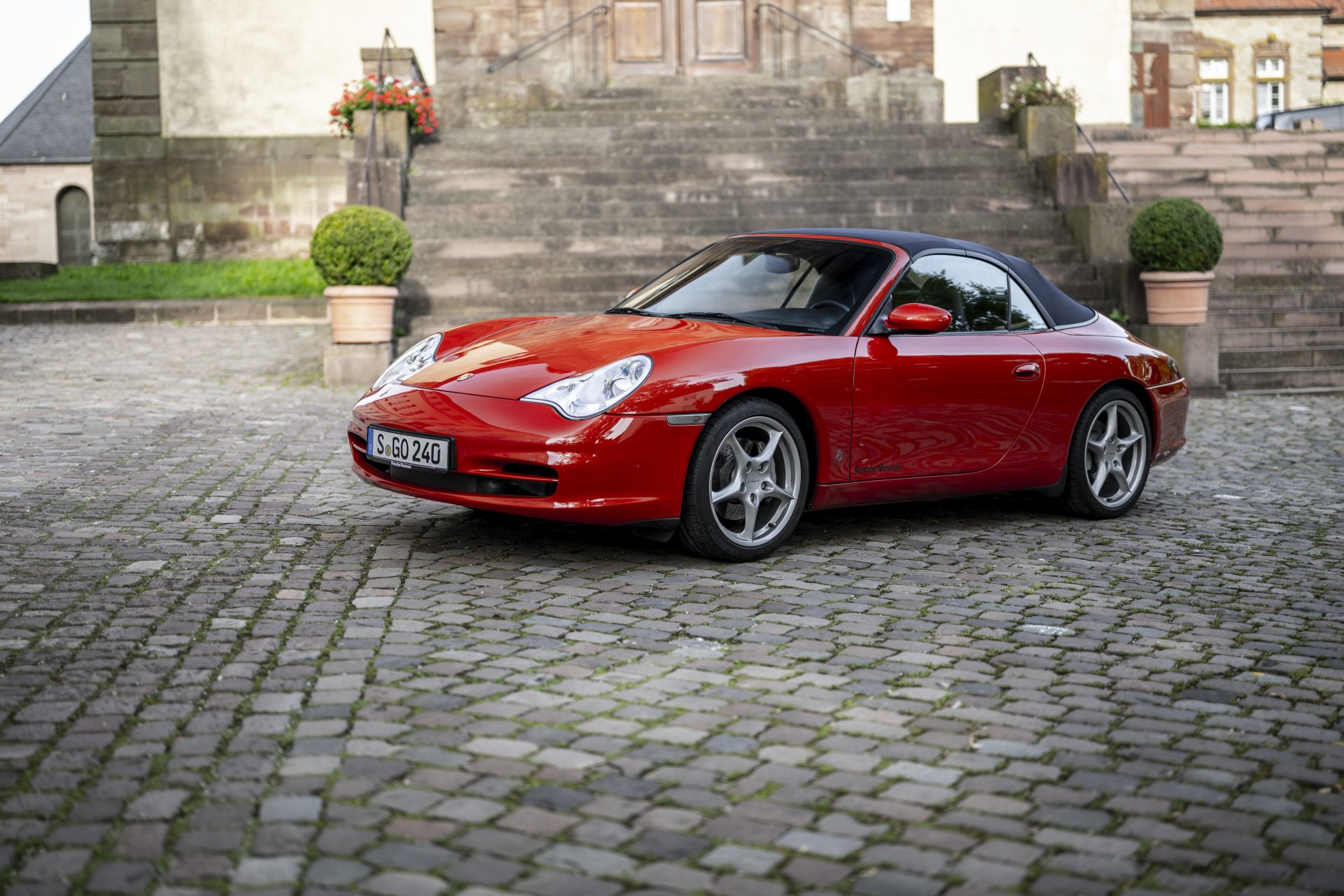
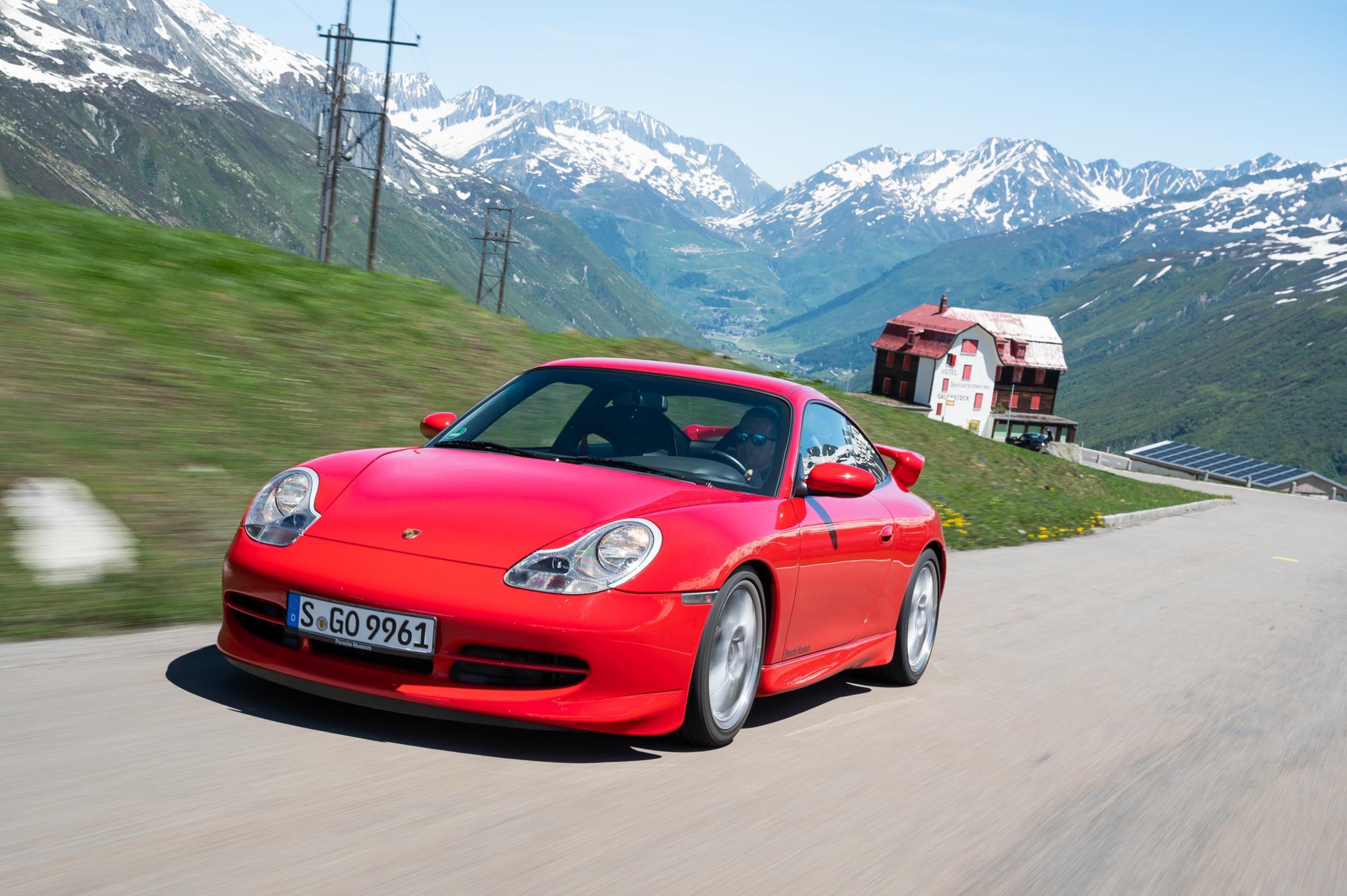
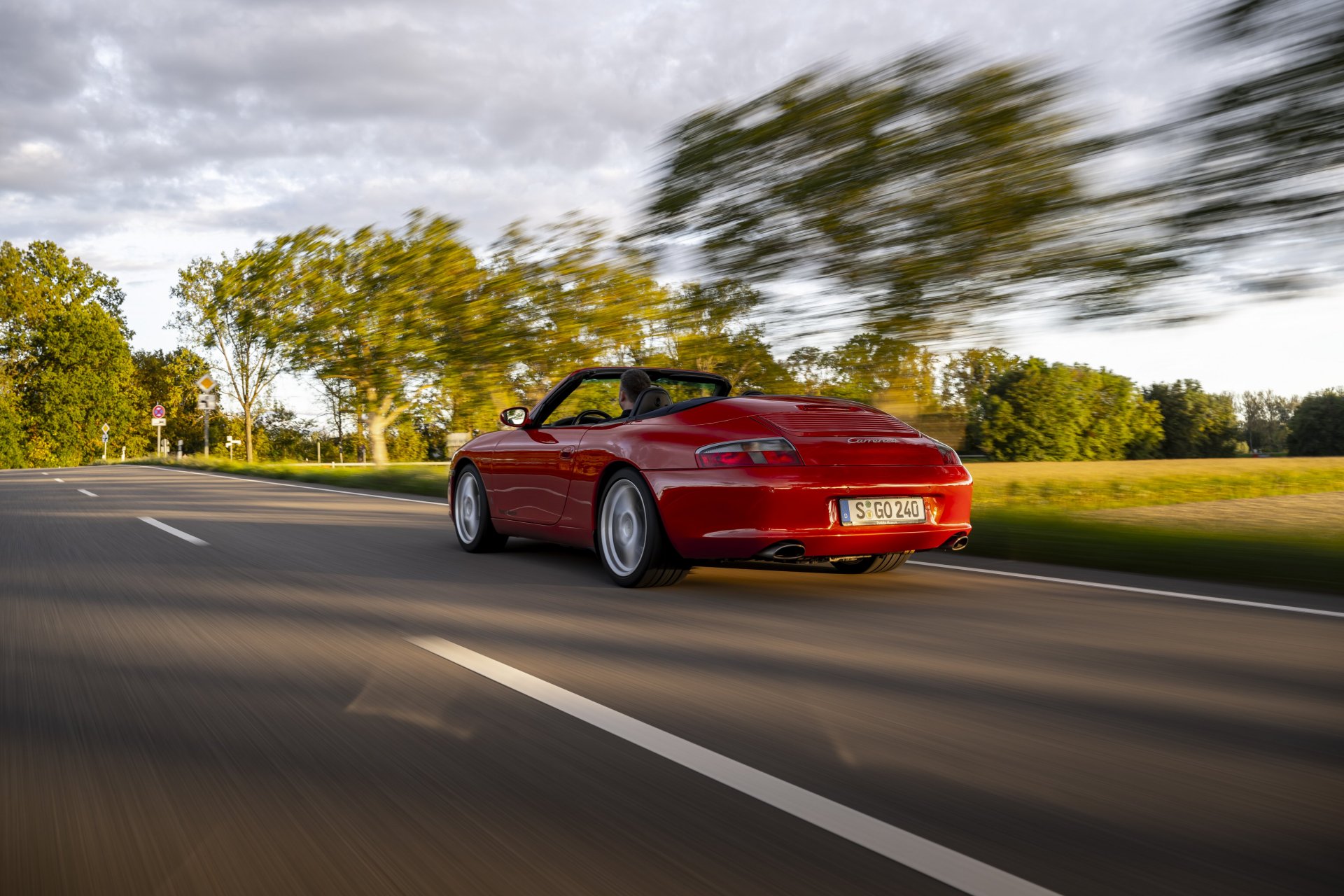
As it turns out, Porsche knows what they’re doing, and the 996 was enough to silence any doubters on the road. It improved on its predecessor everywhere, from feel and sharpness to liveability and economy, enough to resonate with buyers and jumpstart sales. Over 175,000 996s were made during its production, making it the most successful generation in the model’s history but certainly not the most beloved. Not too long after 996s reached customers, some very troubling, “un-Porsche-like” issues began to plague every variant with the new engine. These issues would stain the 996 for years to come, with many laughing at the idea of owning one, not because the car was expensive but because it was almost guaranteed to break.
Luckily for Porsche, almost all was forgiven with the 997. Learning many lessons from the 996, the succeeding model has become a true favorite of enthusiasts today. Its more traditional styling was accompanied by a complete interior refresh, ditching the millennium-styled ovular shapes for a call-back to the air-cooled interiors. Under the skin, the 997 retained the 996’s basic architecture with incremental improvements in materials, manufacturing, and structural design. Initial variants featured an updated but still-troubled engine before a mid-cycle facelift brought about a much-needed new engine.
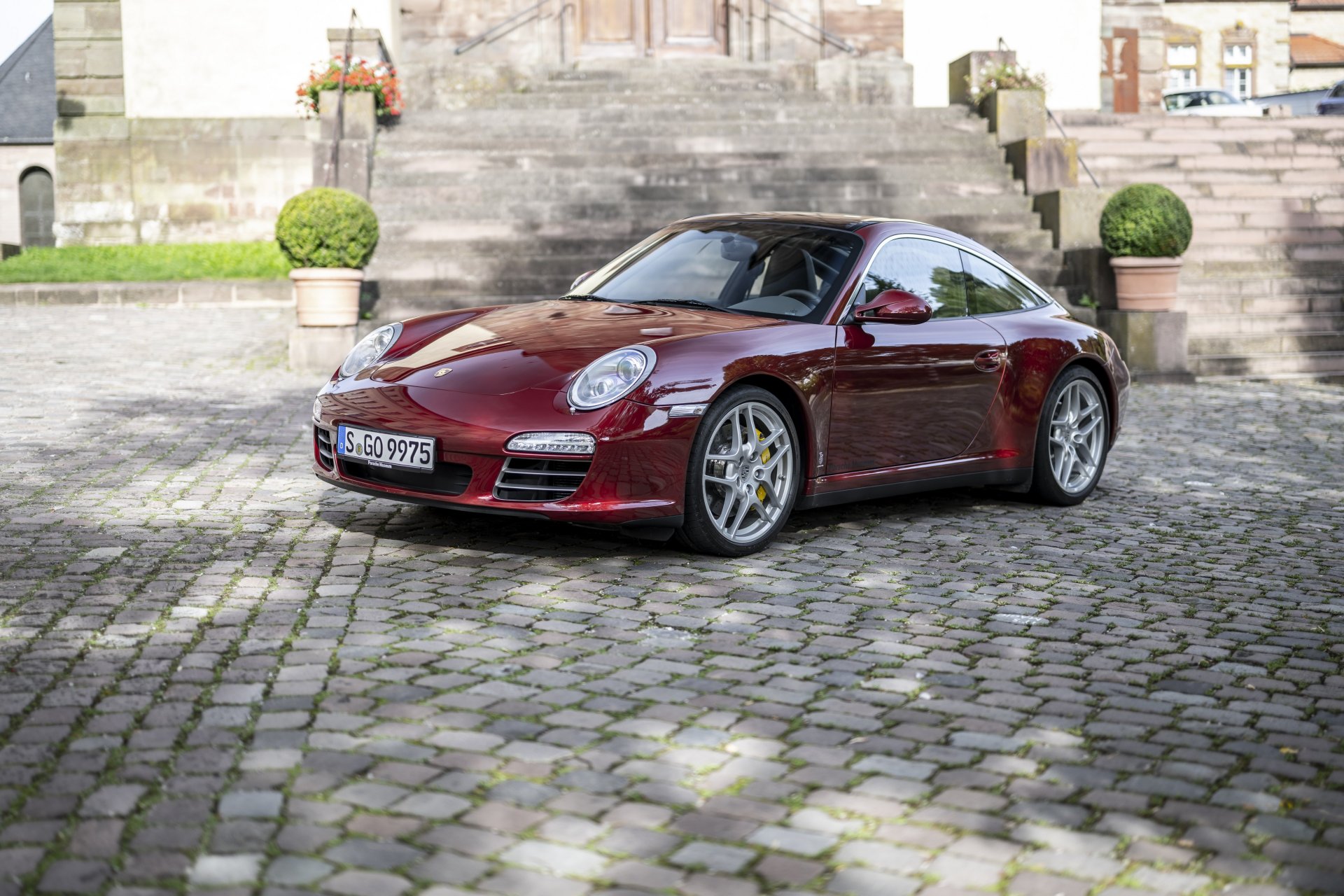
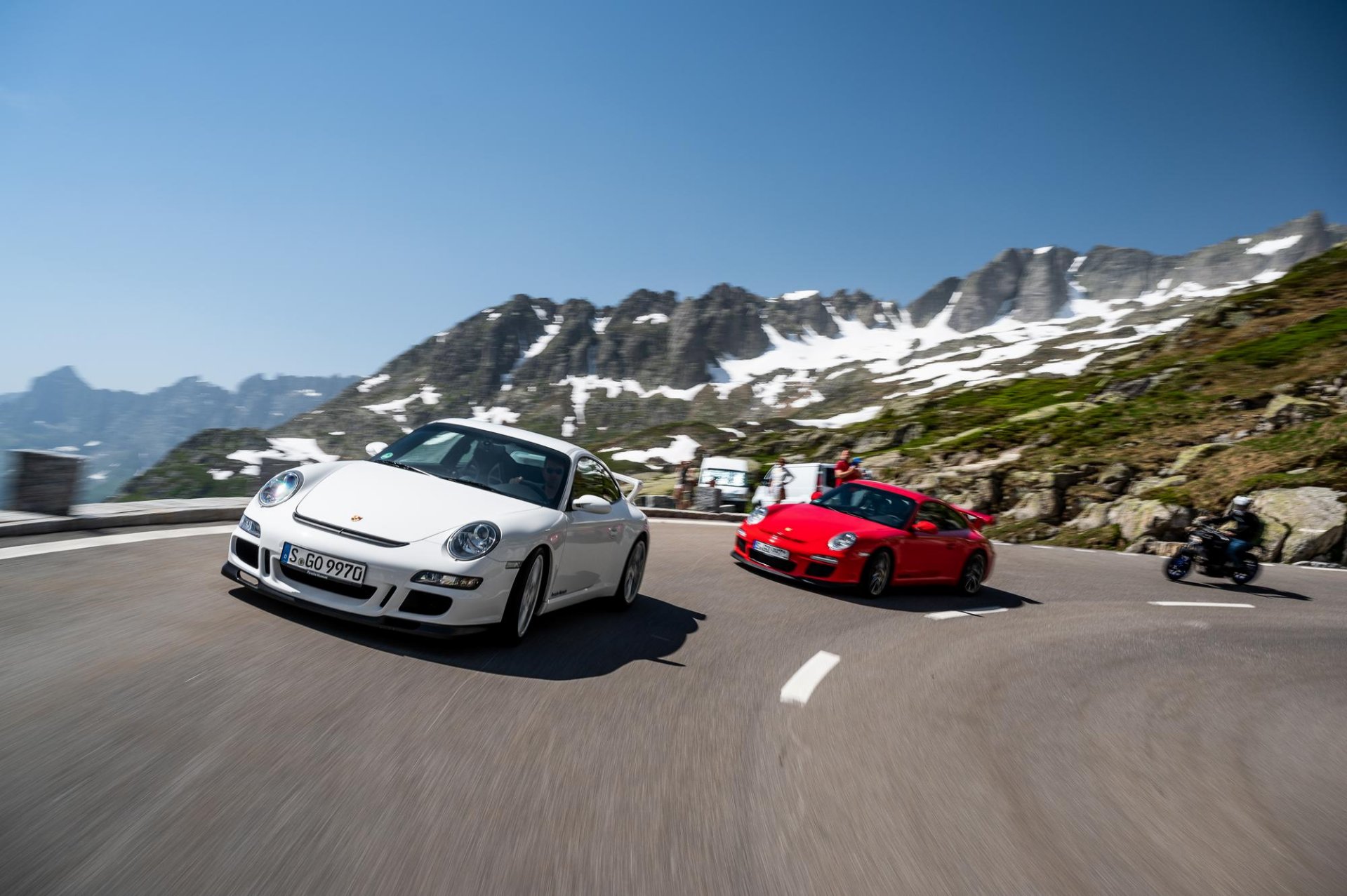
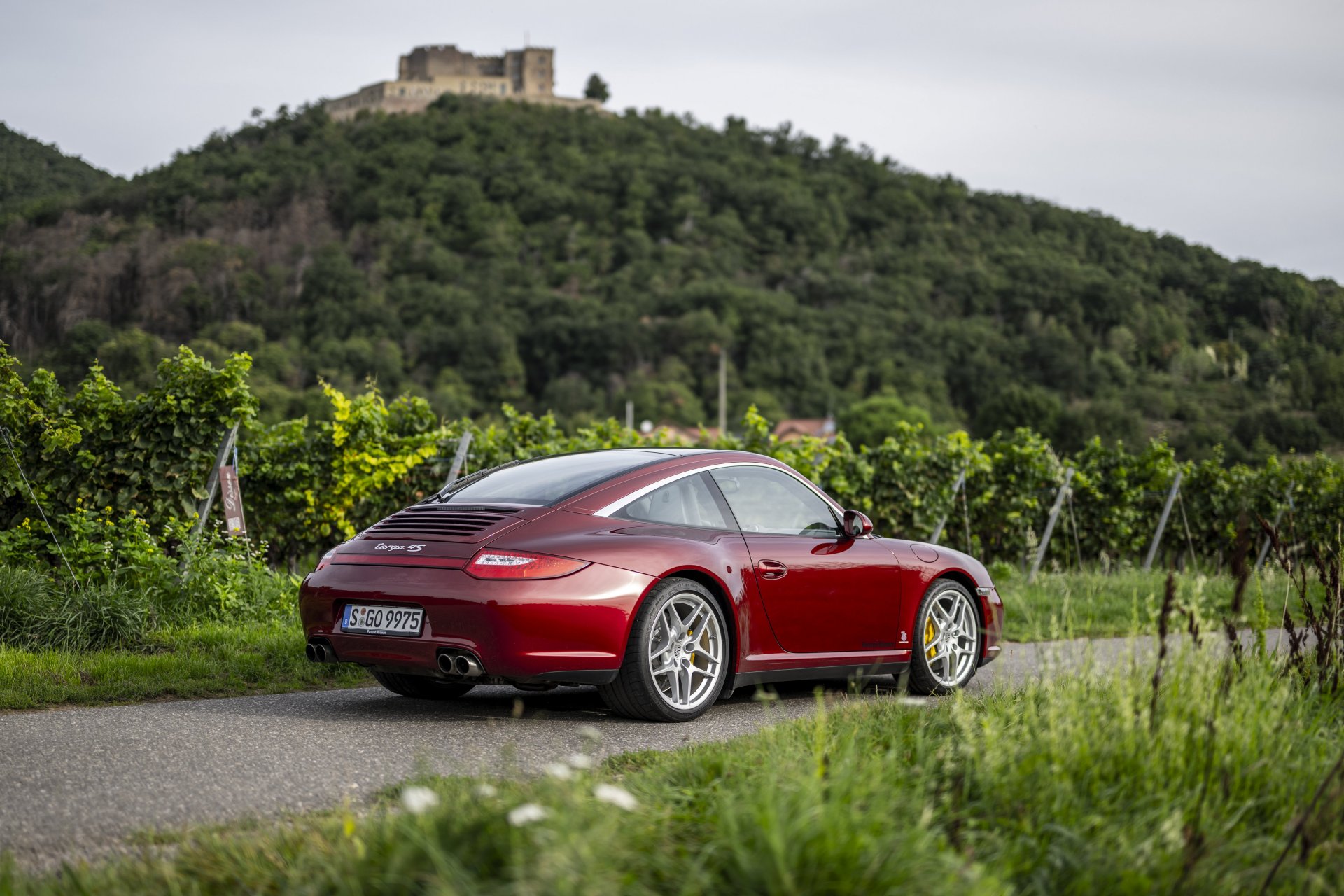
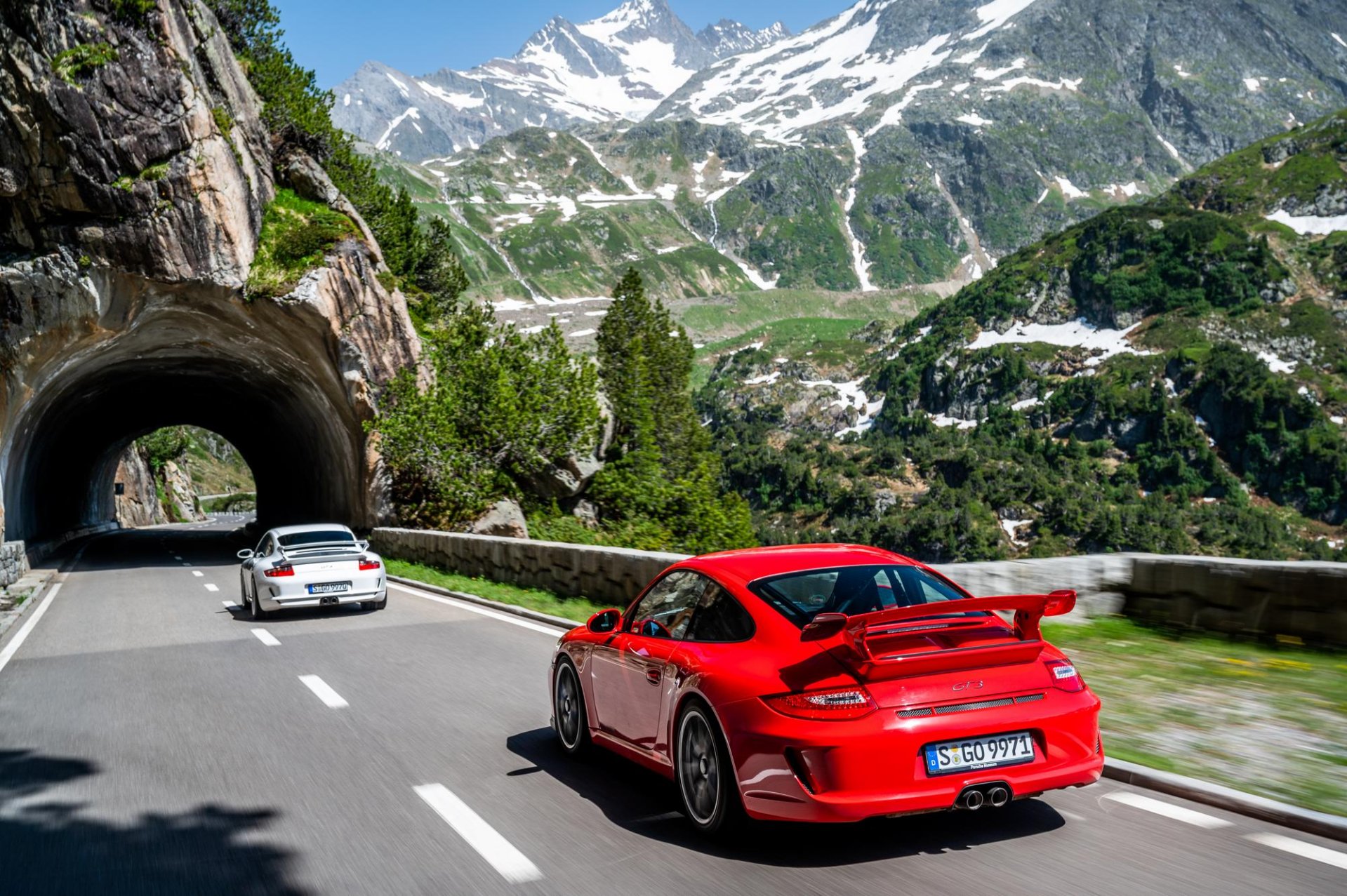
Despite retaining its predecessor's most significant source of mechanical issues, the love for the 997 has never been questioned. Porsche’s tweaks refined their first attempt at a new car into a benchmark. Even today, the 997 is revered among many and highly sought after for its blend of performance and analog traits. In comparison, the 996 has only recently begun to receive some credit as something more than a flawed engine. I’d argue that there’s plenty more to the 996 than that, and its connections to the 997 are much closer than you might think.
Porsche 996 vs 997 Spec Comparison
996 |
997 |
|
|
Model Years |
1999-2005 |
2005-2013 |
|
Model Variants |
9 |
15 (not including special editions) |
|
Engine Displacements |
3.4L-3.6L |
3.6L-4.0L |
|
Engine Variants |
M96.XX (9) |
M96.05, M97.XX (8), MA1.XX (6) |
|
Aspiration |
Normally-Aspirated & Turbocharged |
Normally-Aspirated & Turbocharged |
|
Power Range |
296hp-380hp (N/A) 400hp-462hp (Turbocharged) |
320hp-500hp (N/A) 480hp-612hp (Turbocharged) |
|
Transmissions |
ZF 5HP19 5-Speed Automatic (996.1) Mercedes 722.6 5-Speed Automatic (996.2) Getrag G96 6-Speed Manual |
Mercedes 722.6 5-Speed Automatic (997.1) PDK (997.2) Aisin G97 6-Speed Manual (Carreras) Getrag G97 6-Speed Manual (Turbo & GT) |
Porsche 996 vs. 997 Engines
There are three distinct engine variants found across the 996 and 997 platforms. The first to arrive was the M96, Porsche's first attempt at a mass-market water-cooled flat-six that saw several revisions in its time in both generations. It was good, except for the several areas where they tended to go very wrong. In the Turbo and GT variants, a hybrid of motorsports designs exists in the Mezger-derived engine. Born from the flat-out conditions at La Sarthe, It’s likely the most revered 911 engine of all time thanks to its strength, potential, and sound. Eventually, both of those engines were replaced by the MA1. Radically different from its predecessors, it was a clean slate unencumbered by poor company financials.
M96 & M97
As good as most of those engines are, the M96 and its evolution, the M97, demand a focal point. They were in every 996 and 997.1 Carrera model, making them the most popular engine across the two generations by a long way and a significant part of the 911’s story. Upon debut, they represented a massive cultural shift for Porsche enthusiasts that many thought was sacrilege. Porsche enthusiasts also criticized the 911 when it replaced the 356 in the mid-sixties, so what do they know?
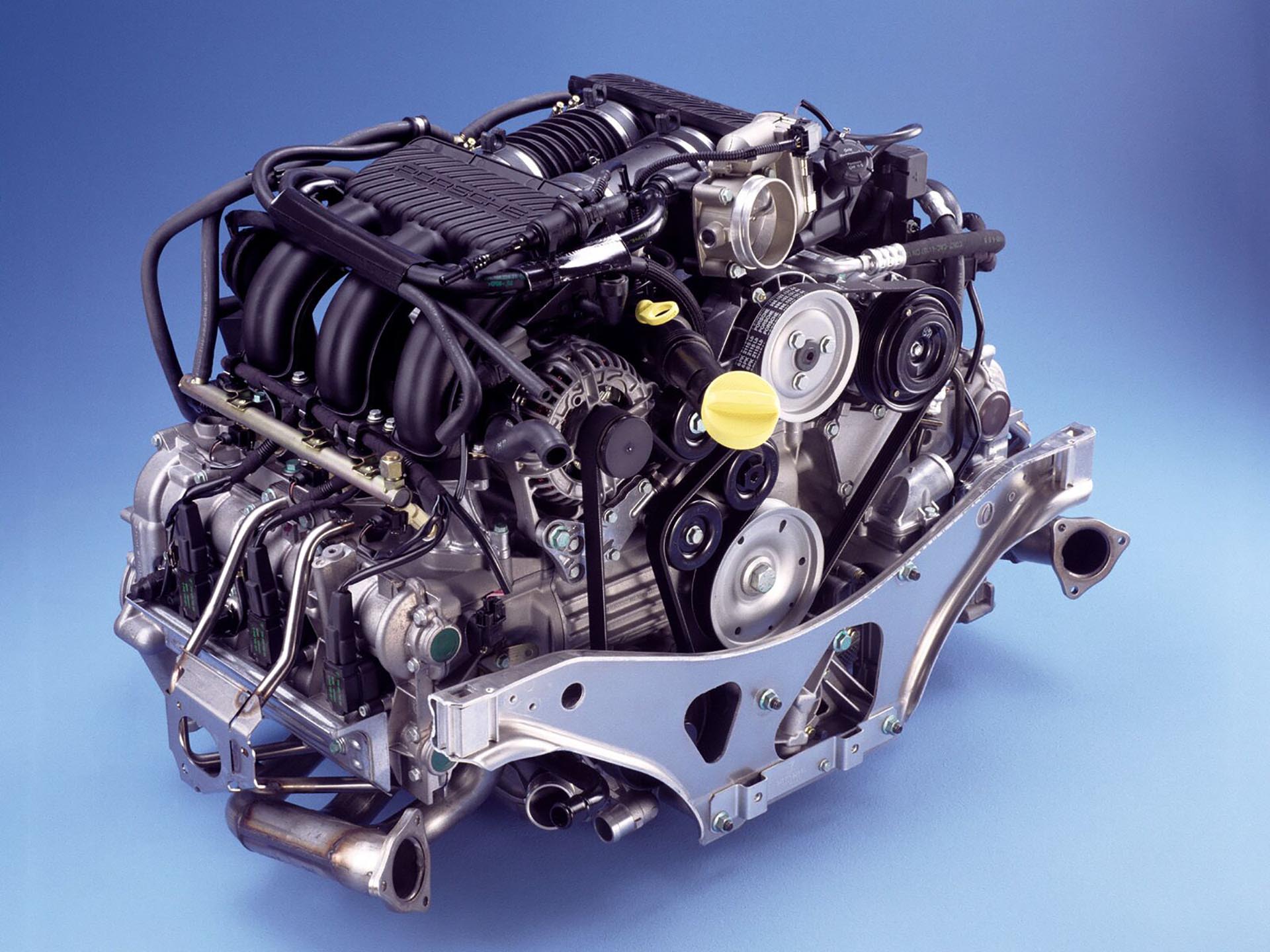
Early 996 owners were rewarded with a smooth and rev-happy engine fitted with the latest variable camshaft timing technology. Its 3.4L was smaller than the outgoing 993, but the four valves per cylinder and other air-flow improvements made it more powerful and efficient. Peak figures clocked in at 296 hp and 258 lb-ft of torque. Nothing special today; it was plenty for the sub-3000lb 996, helping it click off a five-second dash to sixty. In 2002, the facelifted 996 appeared with a stroked 3.6L variant boasting an extra twenty horsepower and fifteen lb-ft of torque. There was also a greater area under the curve as the Variocam Plus debuted in this engine, bringing the benefits of variable valve lift. Other updates included a simplified timing chain and a revised IMS bearing.
When the 997 hit the scene in ‘05, the M96 was again stuffed in the back. Porsche mostly made minor updates except for the final iteration of the IMS bearing, which became impossible to reach without splitting the engine case. Power and displacement remained identical to the 996 for the base Carrera but not for the S. In the sportier trim, the 997 featured the M97, a not-much-updated M96 punched to 3.8L. It used better-flowing heads, larger camshafts, and revised intake and exhaust components to hit 355 hp and 295 lb-ft of torque.
Realistically, the M96 and M97 engine variants are all very similar. Porsche slowly updated the engine over its decade of service, but they were small, gradual changes that more refined the engine than anything. Because of that, they share many issues. IMS bearings have long been solved, but bore scoring and d-chunk cracks are still a $30,000 rebuild, no matter which variant. As bad as that sounds, it levels the playing field (in a way) between the early and late engines. Sure, the last of the 3.8L 997 engines is better than the earliest 3.4L from a 996, but replacing scored bores with bigger ones to improve displacement shouldn’t cost much extra during a repair. Replacement costs are high, but room for improvement is part of the cost.
Mezger-Based M96 & M97
Porsche developed these engines before the bean counters grabbed a larger decision-making share in engineering. Formed through a decade-plus of endurance racing dominance, the partially water-cooled engine is as formidable as they come, boasting a record of immense strength and power potential. If there were ever an engine to have in a 996 or 997, this is likely the one.
At the center of the engine is the DNA of engines past. Because of its connections to the older cars, it utilizes a crankcase, bottom end, and oiling system derived from later air-cooled variants. As such, unlike water-cooled engines from every other automaker, the cylinders aren’t part of the block and bolt to the crankcase. It was necessary for the proper cooling required by four-valve heads, allowing Porsche to keep their under-stressed bottom end. The variants made for road cars span almost fifteen years and offer various power peaks between 360 and 612 hp. Each of the three displacements—3.6L, 3.8L, and 4.0L—has multiple normally aspirated and turbocharged variants.
Over the course of its use, Porsche made more than a handful of upgrades and updates to keep competitors at bay, making the 997 variants that much sharper. The variable valve timing improved its adjustment rage, the turbochargers gained variable turbine geometry, displacement jumped above 3.6L, new manifolds took shape, and cylinder head ports were reshaped. By the end, the GT3RS 4.0L utilized bottom-end components from the GT3R and RSR race cars in shared engine architecture. For those abbreviated reasons, the 997 GT and Turbo cars have better engines than the 996, but not by an enormous margin. Any Mezger M96 or M97 engine can have serious and reliable power with the right upgrades.
MA1/9A1
Porsche has a track record of listening to their customers, so you can bet they were listening and watching as their first water-cooled engine exploded in their customer’s faces. As unfortunate as it was, the 996’s success alongside the Boxster and Cayenne gave the company the stability to do what they do best. The resulting MA1 engine was everything Porsche needed, restoring reliability to their flat power plants.
Starting with a traditional closed deck engine case (cast cylinders) made of tougher materials, Porsche dropped in a fully-forged rotating assembly. Each bank featured a new head design with intensely reshaped intake ports incorporating Porsche’s first direct fuel injection to help make it the most efficient generation yet. Power was up across the board, too, but the most significant benefits supported reliability. The revised engine case material and a more traditional timing chain setup eliminated the IMS bearing and prevalent bore scoring issues the 996s were famous for. If there were ever an engine to use daily in the 996 or 997, this is the one.
It also represents the first shift for the Turbo and GT models. While the GT3 and GT2 used the Mezger until they left production, the facelifted Turbo received the all-new engine. In the 997 and later chassis, the MA1 engine has proven to be just as stout as its predecessors while carrying more advanced systems.
Porsche 996 vs. 997 Transmissions
Porsche’s sports car driving experience includes a few positive traits, like the gearbox. Transmission offerings in the 996 and 997 were largely similar, consisting of manual and automatic options throughout their production. While the three-pedal options remained steady between the generations, the two-pedal went through a drastic change that brought the 997 up to the cutting edge.
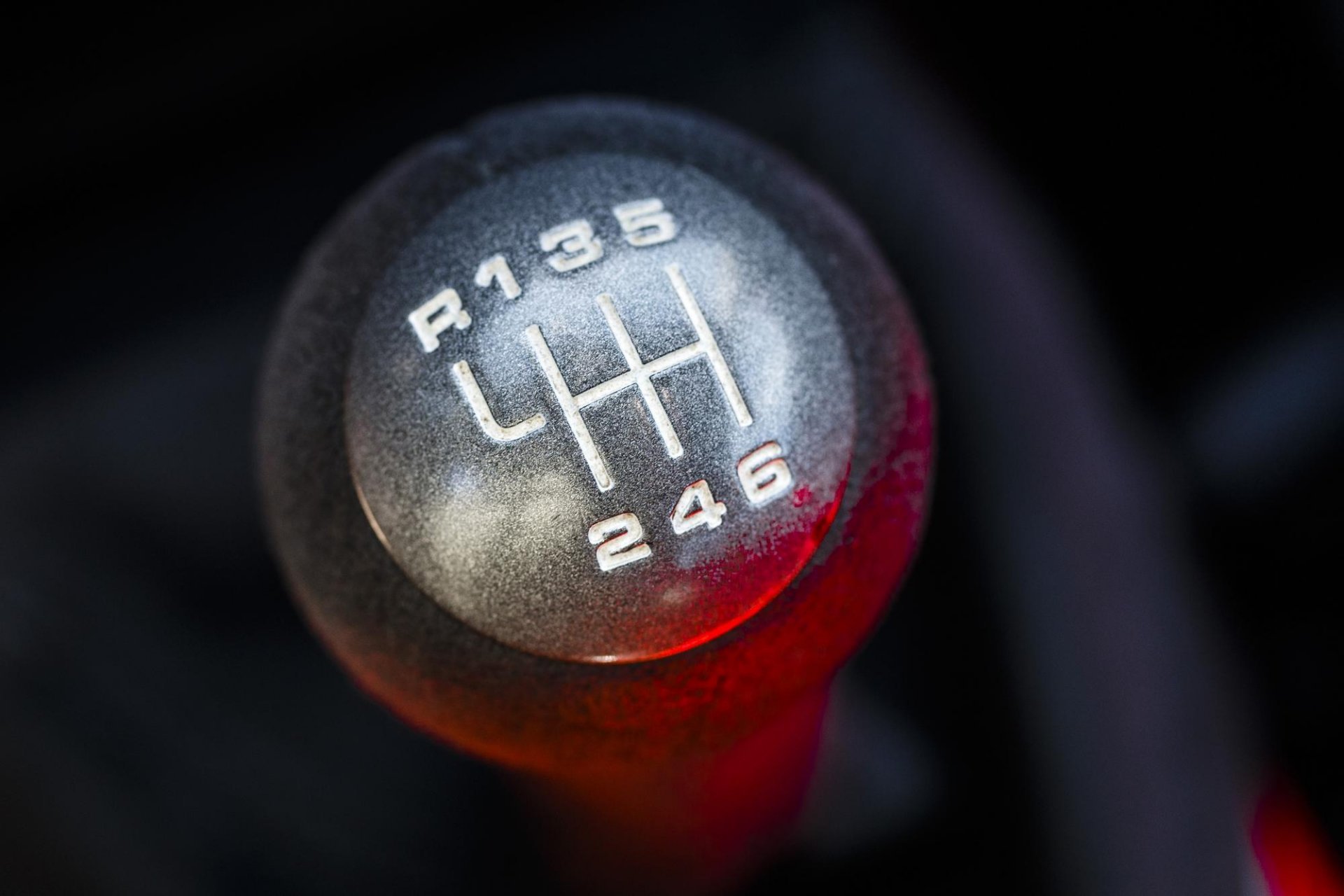
After Porsche stopped building gearboxes in the eighties, they turned to Getrag. As such, the 996 utilizes the Getrag G96, a cable-shifted six-speed unit. There isn’t much special about it—no fancy synchros or electronics—but it serves its role well, providing an engaging shift operation full of mechanical feel. All-wheel-drive Carreras untitled a center differential fitted to the transmission’s tail housing to send torque up a driveshaft to a differential on the front axle. Each Carrera features the same gearing and final drive ratio.
The 996’s automatic gearboxes had a bit more variation. Although the 996 always had the “Tiptronic S” automatic, pre and post-facelift variants use different transmissions. Early models utilized the ZF 5HP before a switch to the Mercedes 722.6. Both serve admirably and provide a fairly sporty driving experience thanks to relatively quick shifts and a TCU that’ll adapt its shift qualities to the driver.
The Mercedes-built gearbox stuck around in the transition to the 997, but long-time supplier Getrag was partially out. Instead, Porsche turned to Aisin for the Carrera’s manual transmissions but retained the Getrag units for the Turbo and GT models. The new gearbox was slightly different internally and fitted with revised gear ratios, keeping the 997 talkative and engaging. The biggest change was to the AWD system, which gained the PTM system found in the 996 Turbo models—that is until the PDK debuted in the 997.2.
Over twenty years since Porsche tested versions in their 956/962 race car and in-house 924 prototypes, the double-clutch gearbox finally reached their customers. Although not the first to market, the PDK was a revelation among sports cars in 2009 as one of the first of its kind. Combining the speed and strength of a manual transmission, the two-pedal driving of automatics, and the fast-shifting of motorsports transmissions into one reliable package meant every 997 had the performance it deserved. It’s a different animal than the Tiptronic, and buyers were happy to order them.
Compared against each other, the PDK is the only standout. The Getrag and Aisin gearboxes are nearly identical in feel and engagement. They each have their subset of issues, but most have served 911s for many miles. Proper servicing and a respectful throw go a long way toward longevity. The automatics are similar; there are few issues to write about, and any with the Mercedes 722.6 can be serviced at a reputable Mercedes transmission repair shop. The PDK is trickier to service from a mechanical repair standpoint, but servicing is straightforward. It falls between the manuals and early autos for engagement, but the added launch control feature with the Sport Chrono Package Plus is a bonus.
Porsche 996 vs. 997 Suspension & Chassis
As with other systems, the 997 retained the 996’s basic suspension architecture. There wasn’t a need for a radical redesign, and while small changes made improvements, many components are interchangeable between the two models. Both cars use a MacPherson front strut with a two-piece lower wishbone. In the rear, a multi-link setup uses a similar lower wishbone with three extra arms to control toe and articulation, while a coil-over shock handles the damping.
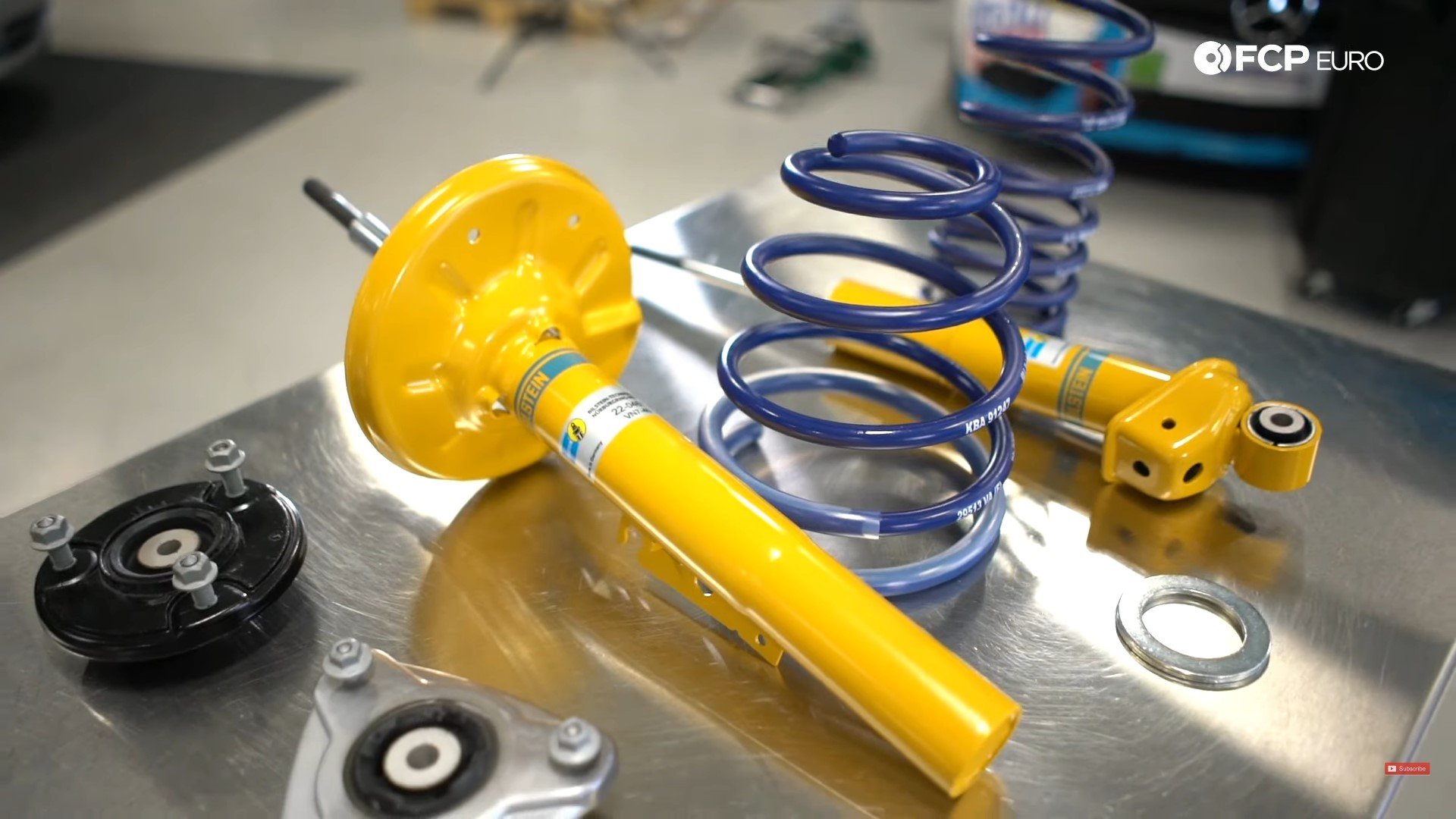
The differences come from a few areas dictated by safety and performance improvements. Track width ballooned on the 997, so its cross-members are 30mm wider to account for that. Rear control arm mounting points moved to account for the track, and the sway bars widened to follow suit. The control arms are similar between the two generations, differing only by their bushing type; the 996s use solid rubber, while the 997 has fluid-filled units. Front struts are interchangeable, but the rears are a different length. However, we recommend sticking with the damper designed for the chassis, as several chassis-specific factors determine the damper characteristics.
Then, Porsche introduced PASM or Porsche Active Suspension Management. Every 996 damper is a passive unit, set to specific, unadjustable parameters by its manufacturer, whereas the PASM unit is electronically controlled, allowing compression and rebound to change on the fly. In short, it allowed owners to soften or stiffen the suspension at the press of a button, making 997s equipped with it feel unlike any 996.
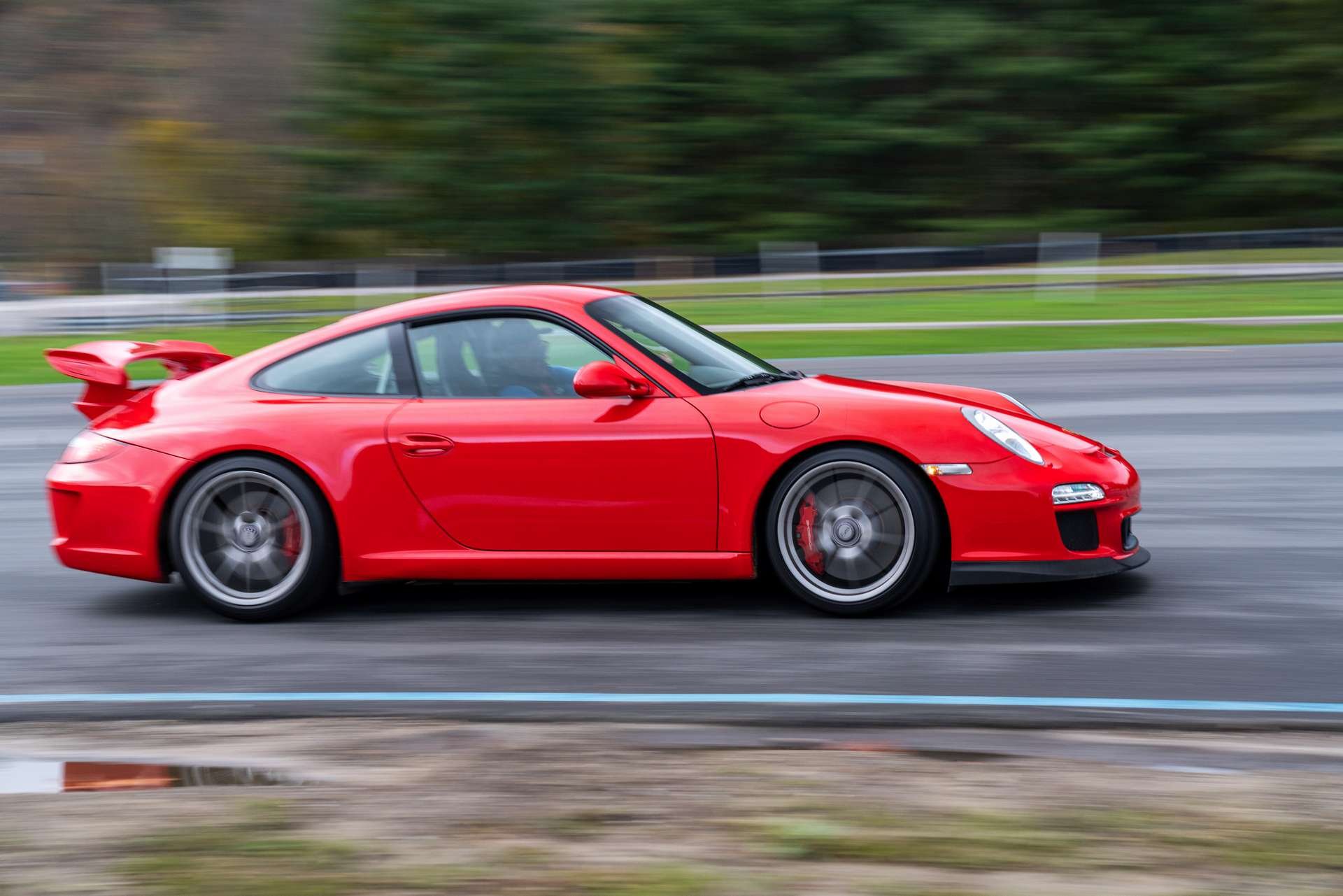
The 996 and 997 won’t feel the same at the wheel, as their steering racks are linear and non-linear, respectively. Because of that, the 996 is more nervous on-center than its successor. Both are strong under braking, but sizing depends on the model. The same caliper fitted to most 996 Carrera variants saw service in the 997 but only on the early Carrera. Every other 997 utilized the brakes from the 996 Turbo, if not larger ones. Porsche Ceramic Composite Brakes were only 996 GT2 or Turbo S, but were an option on any 997. While larger, there weren’t any significant braking upgrades beyond caliper and disc size.
Upgrading to larger brakes on a 996 or 997 can be tough, depending on which knuckle you have, as the larger calipers have larger bolt spacing. Upgrading your 996 or 997 suspension to that of a different model can also be a challenge because of Porsche’s suspension tuning. Each variant has unique spring rates and sway bar sizing depending on the performance trim and roof specification. Only the control arms are interchangeable without altering the original suspension dynamics.
Porsche 996 vs. 997 Exterior
No cries coming from law and dentist’s offices in the late nineties were louder than those denouncing the 996. The fried egg headlights and less shapely chassis were a huge sticking point for many who’d grown up with bulbous flares and circular headlights. Combined with the water-cooled engine, it seemed as though the end was nigh. Any calls for mourning faded once the 997 restored the familiar shapes and lines of 911's past.
After thirty years of circular headlights, the Boxster and the 996 sported the much-maligned “fried egg” lights. Traditional 911 always had turn signals and reflectors mounted below the headlight in the bumper, but designer Pinky Lai combined the two into the now infamous design. It changed for the facelift, but only slightly so.
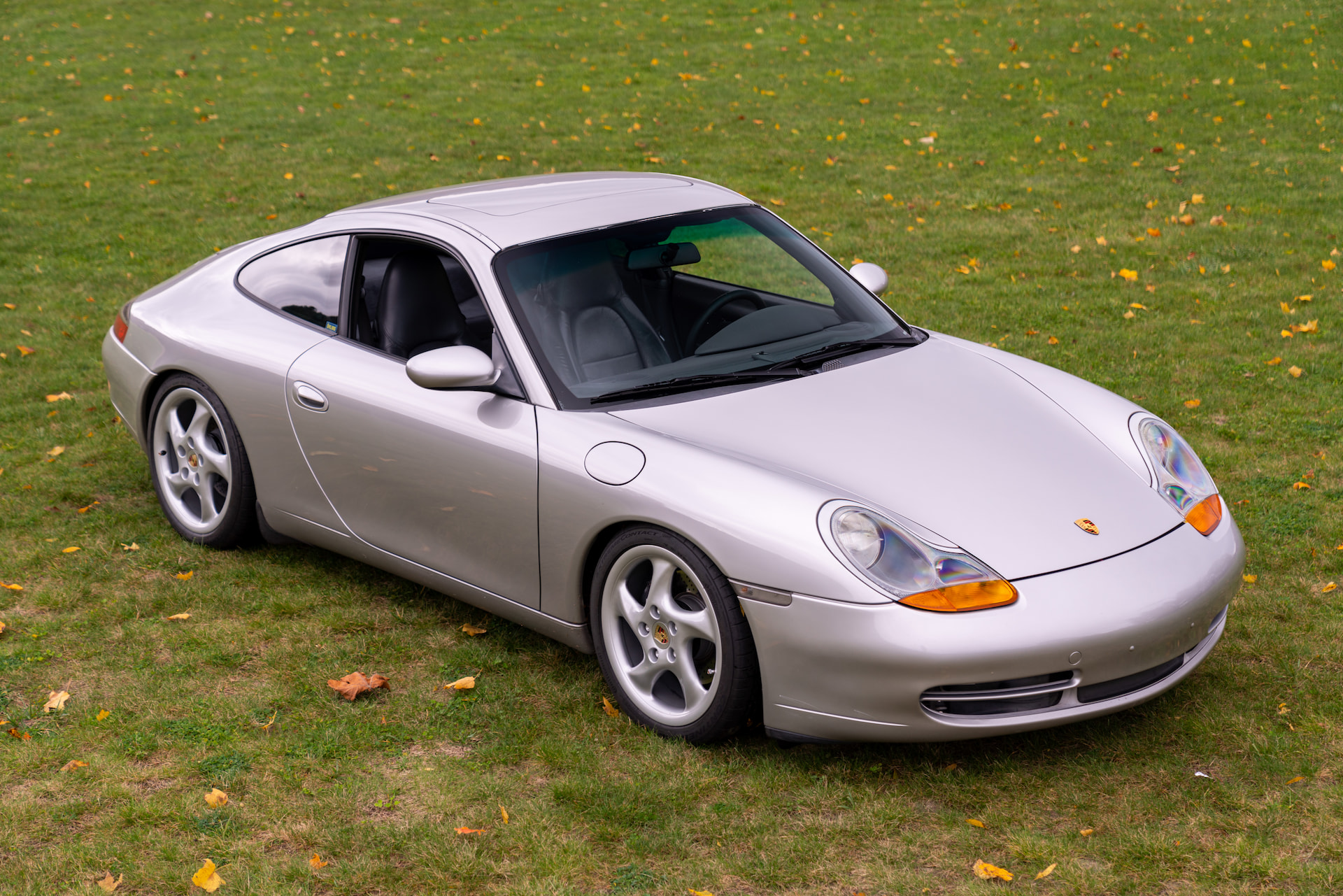
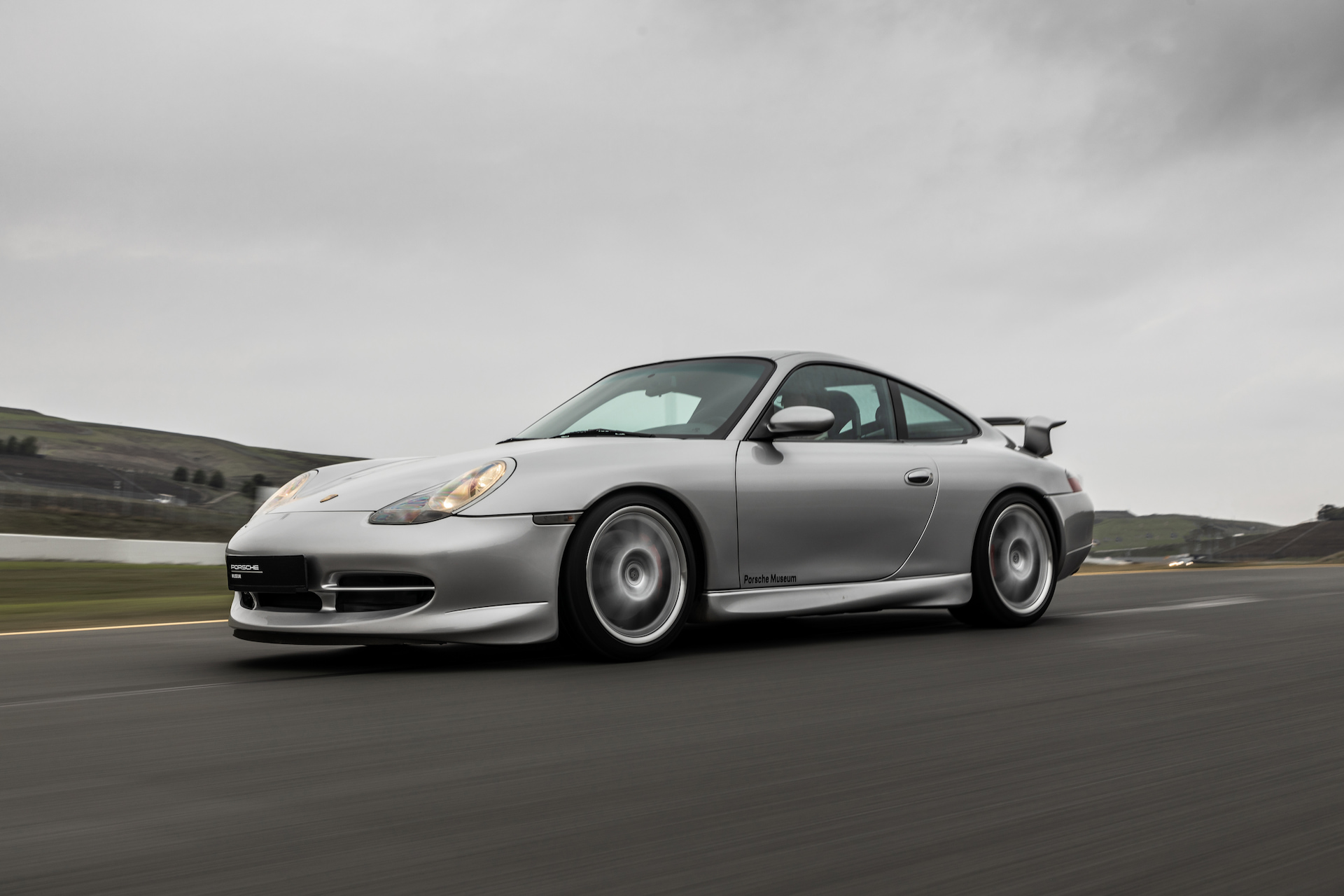
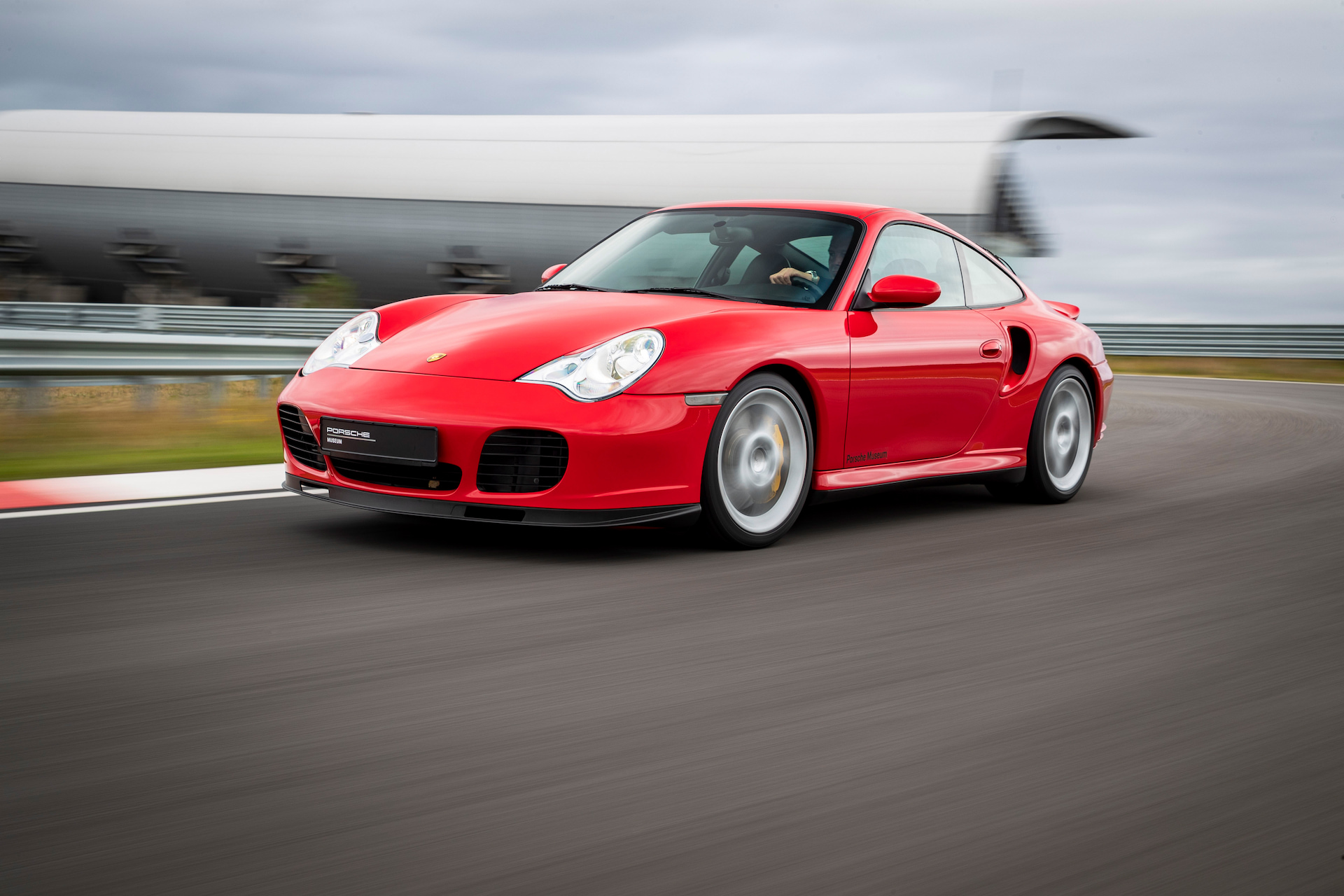
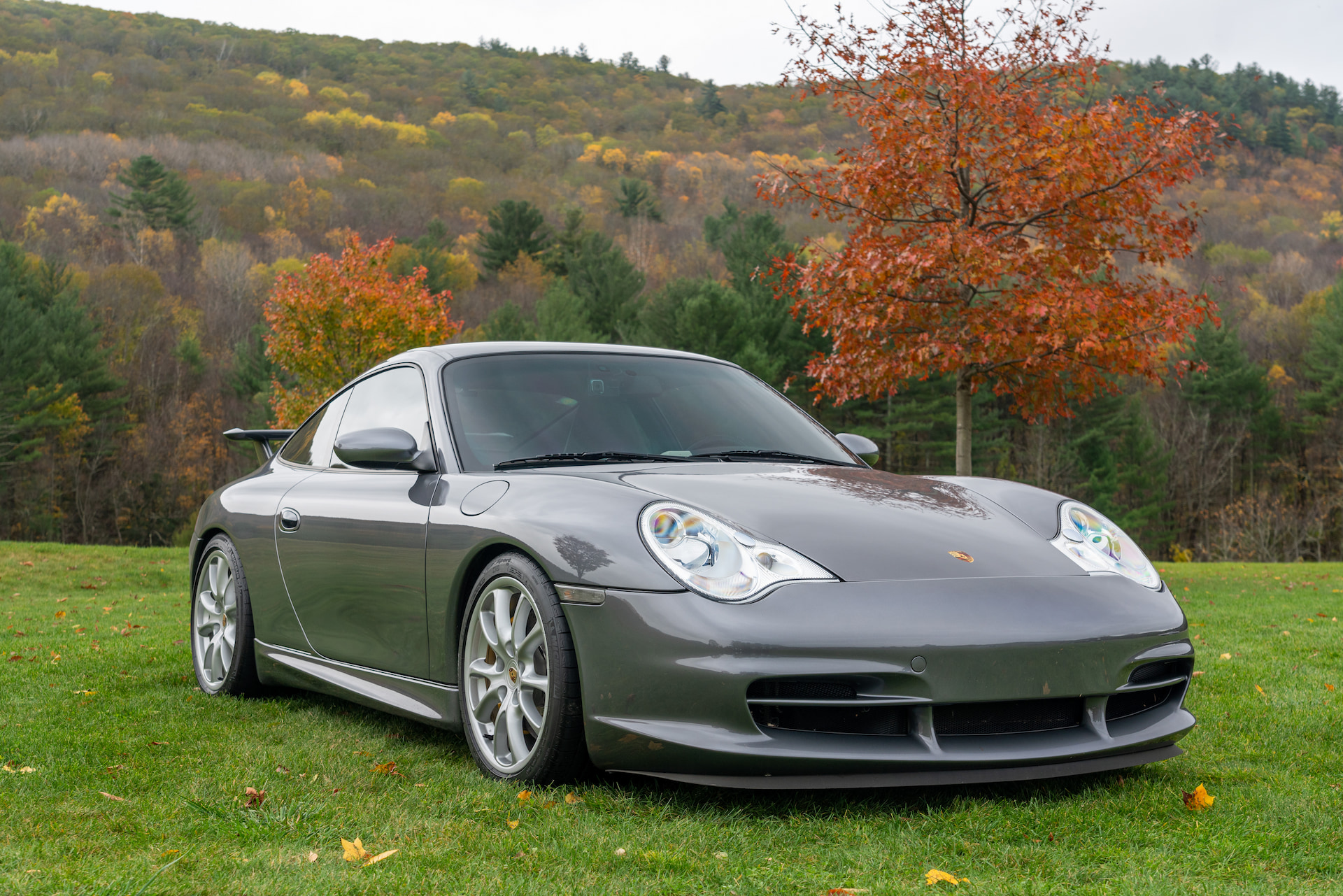
Significantly expanding cabin space while only slightly widening the track meant the 996 also lost the shapeliness synonymous with past 911s. The doors were nearly as wide as the fenders, erasing any waist for a slab-sided approach like the earliest 901s. The later Turbo and 4S models donned puffed-out quarter panels, bringing back some lost aggression. Out back, the lowered roofline and subdued quarters converged into a familiar, unoffensive shape with plenty of similarities to predecessors. Porshcephile displeasure aside, sales figures show that more than enough didn't mind the new design direction.
They took a recalculated approach with the 997 and ditched its new-age styling for tradition, retaining only the roof on essentially the same substructure mounting points. Cabin size remained, but the bulging fenders and quarters returned thanks to a broader track. There were two body sizes, with all AWD trims utilizing the wider version. The RWD Carrera, Carrera S, and the .1 GT3 all used the “narrowbody” chassis. Up front, the polarizing headlights made way for a traditional elliptical shape, and the turn signals headed down to a redesigned bumper, capping off the significant changes. A slightly different taillight shape and a revised rear bumper rounded the new model.
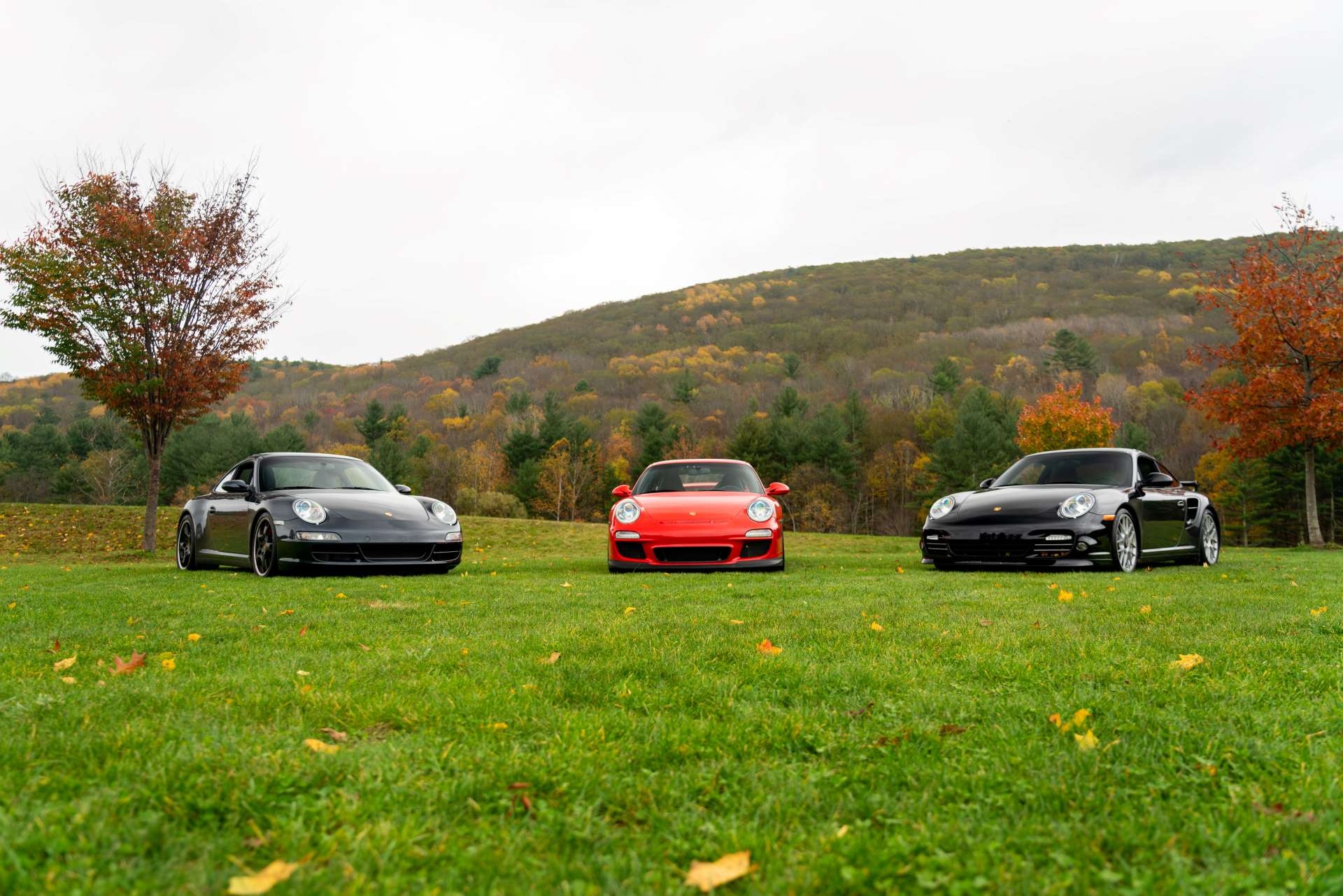
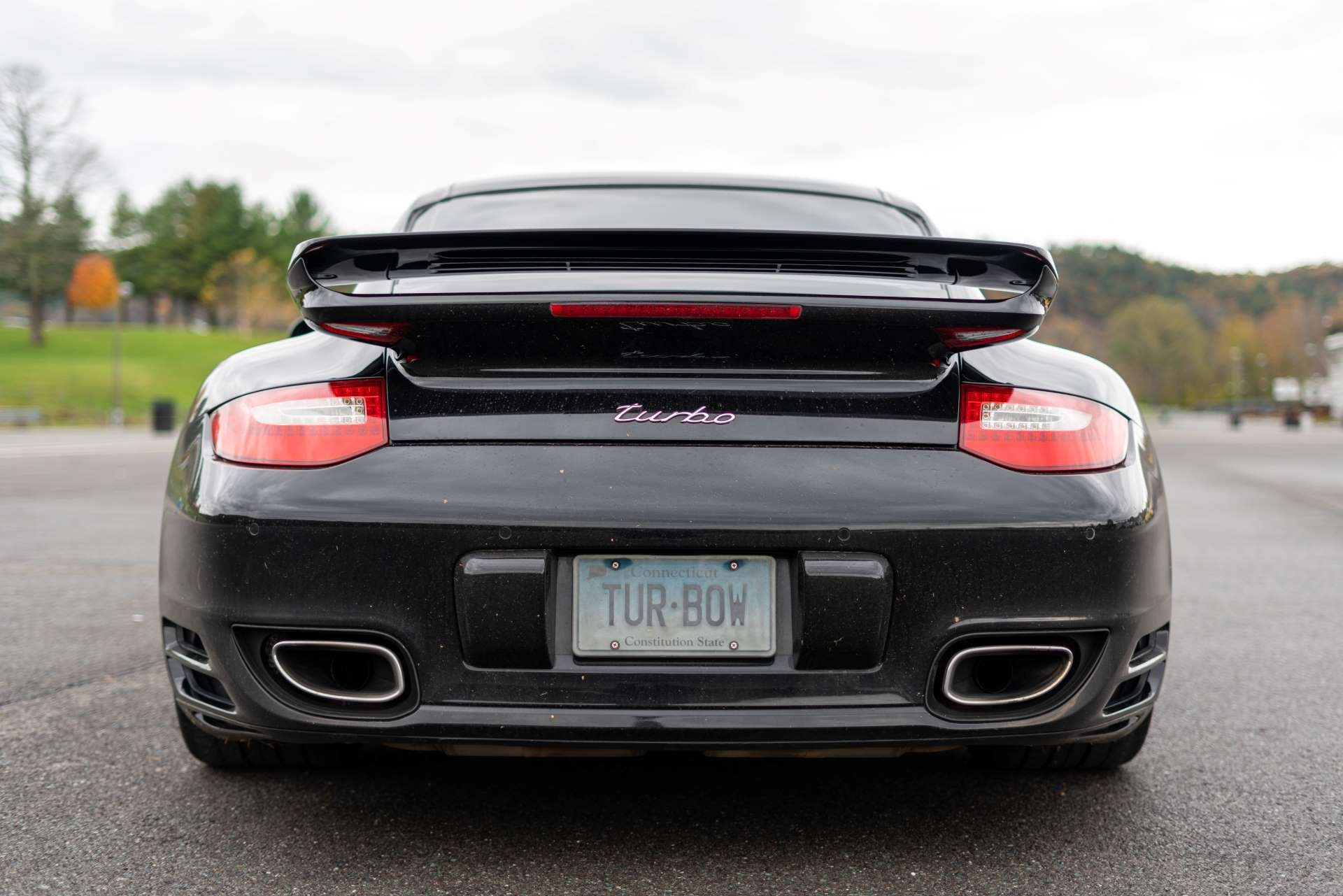
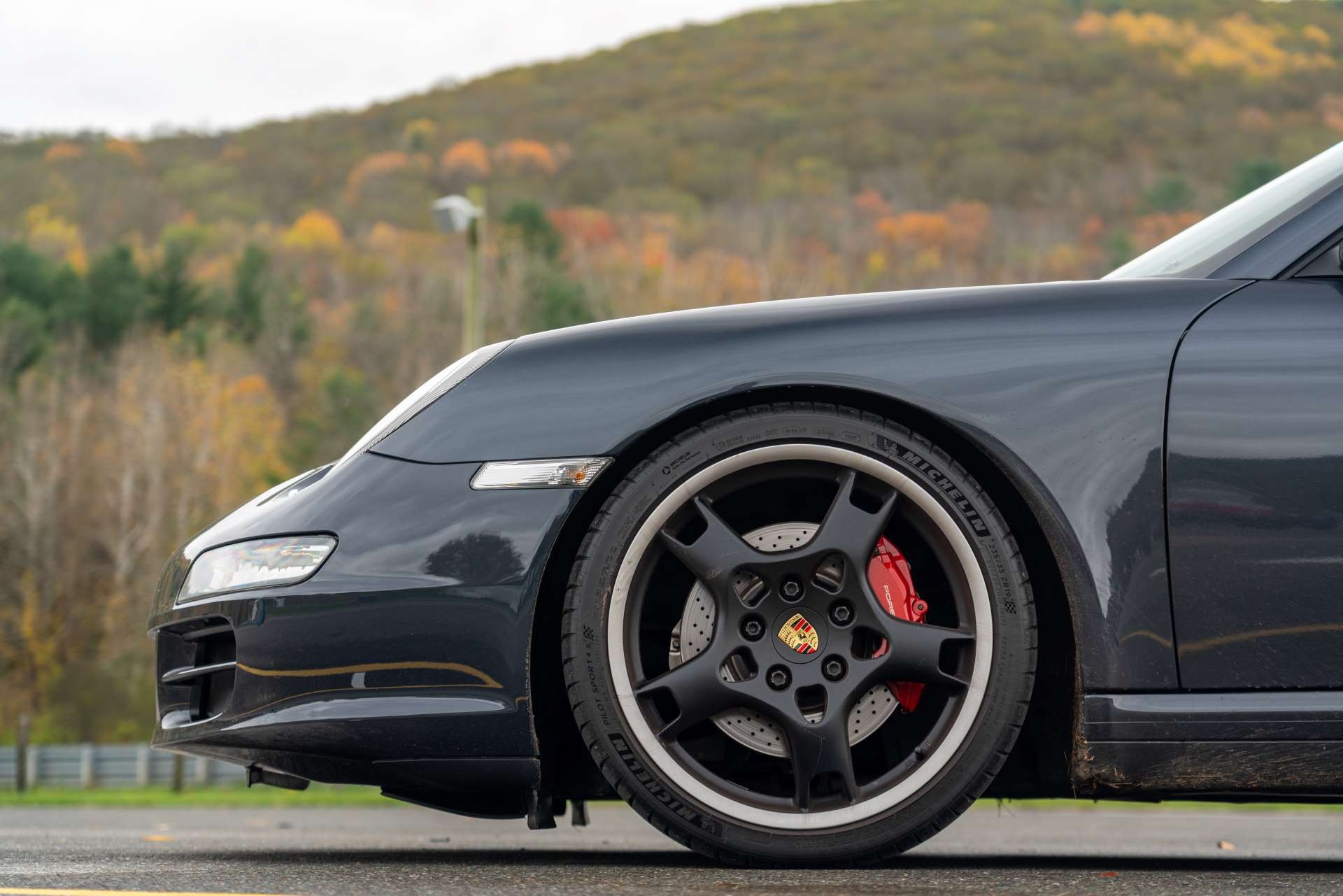
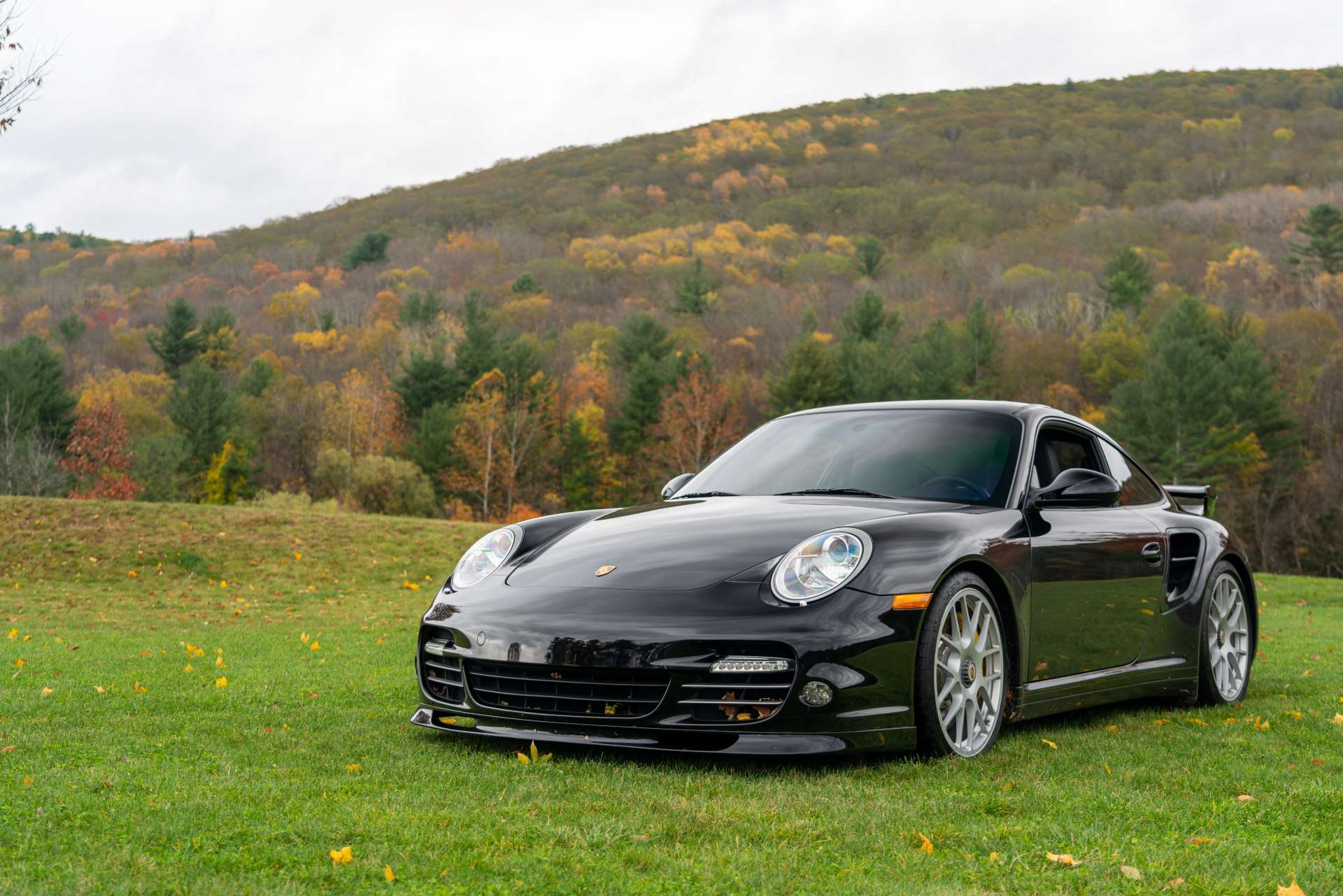
Both models had a handful of optional wheels throughout production. There were also optional headlights, taillights, trim coloring and material, aerodynamic packages, and exhaust tips. Porsche’s color palate went through a rough patch in the early aughts, but both generations have plenty of vibrant metallic and non-metallic colors. Wheels could also be optioned in several colors, including body color. Beyond their physical differences, buyers were given many of the same kinds of options for their respective generations.
At this point, the 996 is finally coming of age. The eggy lights have grown on many and are now supported by a large generation who grew up with them. Models fitted with the Aero Kit (XAA) option are even genuine collector cars now. They’re charming and perfectly of the era, but that doesn’t stop the 997 from being the accepted favorite. Its wider body makes its proportions just that bit more characterful and impactful. And the round headlights don't hurt either.
Porsche 996 vs. 997 Interior
The 996 totally revamped the 911’s interior styling, keeping only a few cues from predecessors. Instead of straight lines and hard edges, it was a confusing array of soft and rounded edges, with swooping door handles and elongated ovoid buttons. Hard plastics were everywhere, from the center console to the vents, dashboard trim, and radio surround. For the first few model years, those plastic bits would come black, regardless of interior color, unless you paid for the option that matched them.
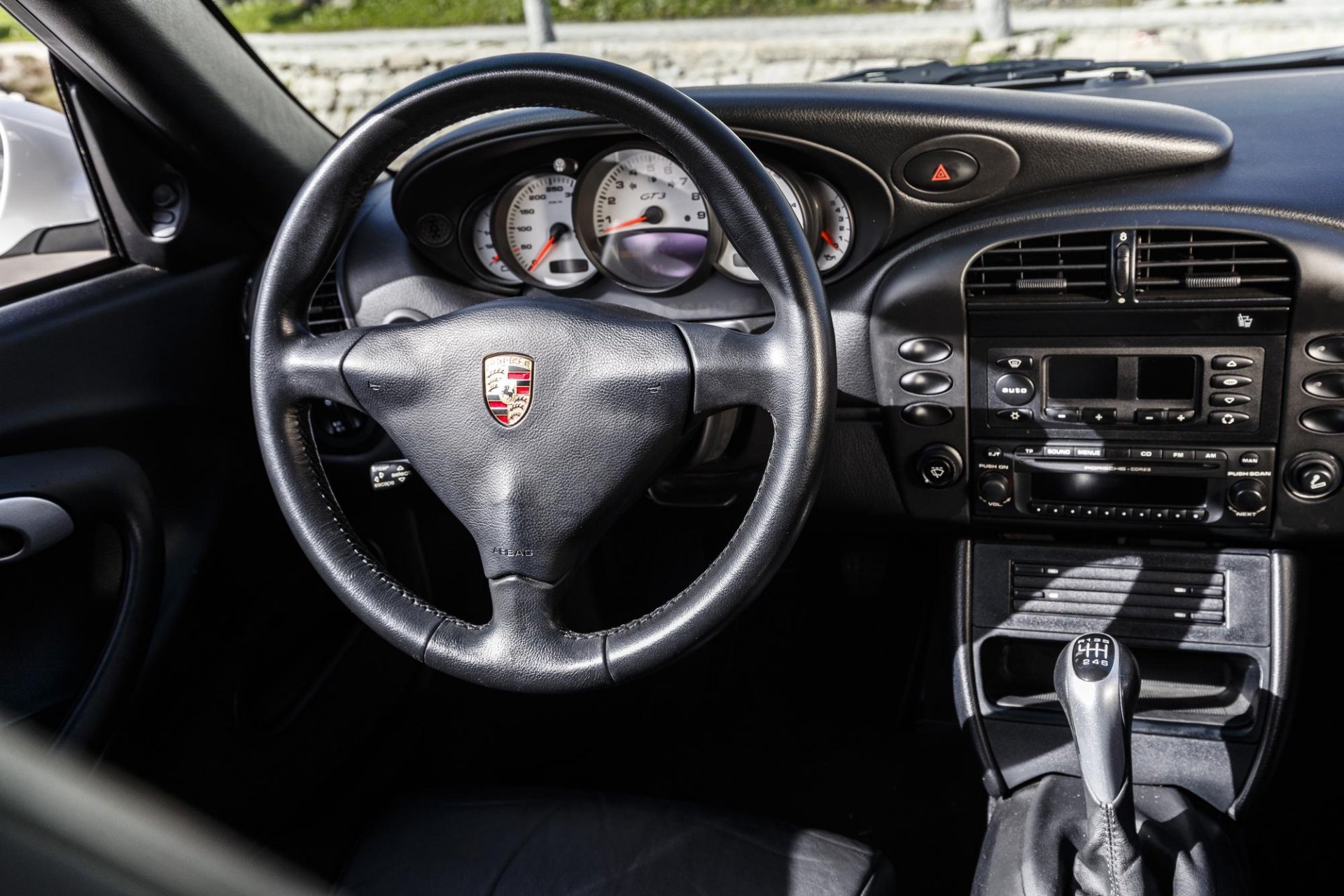
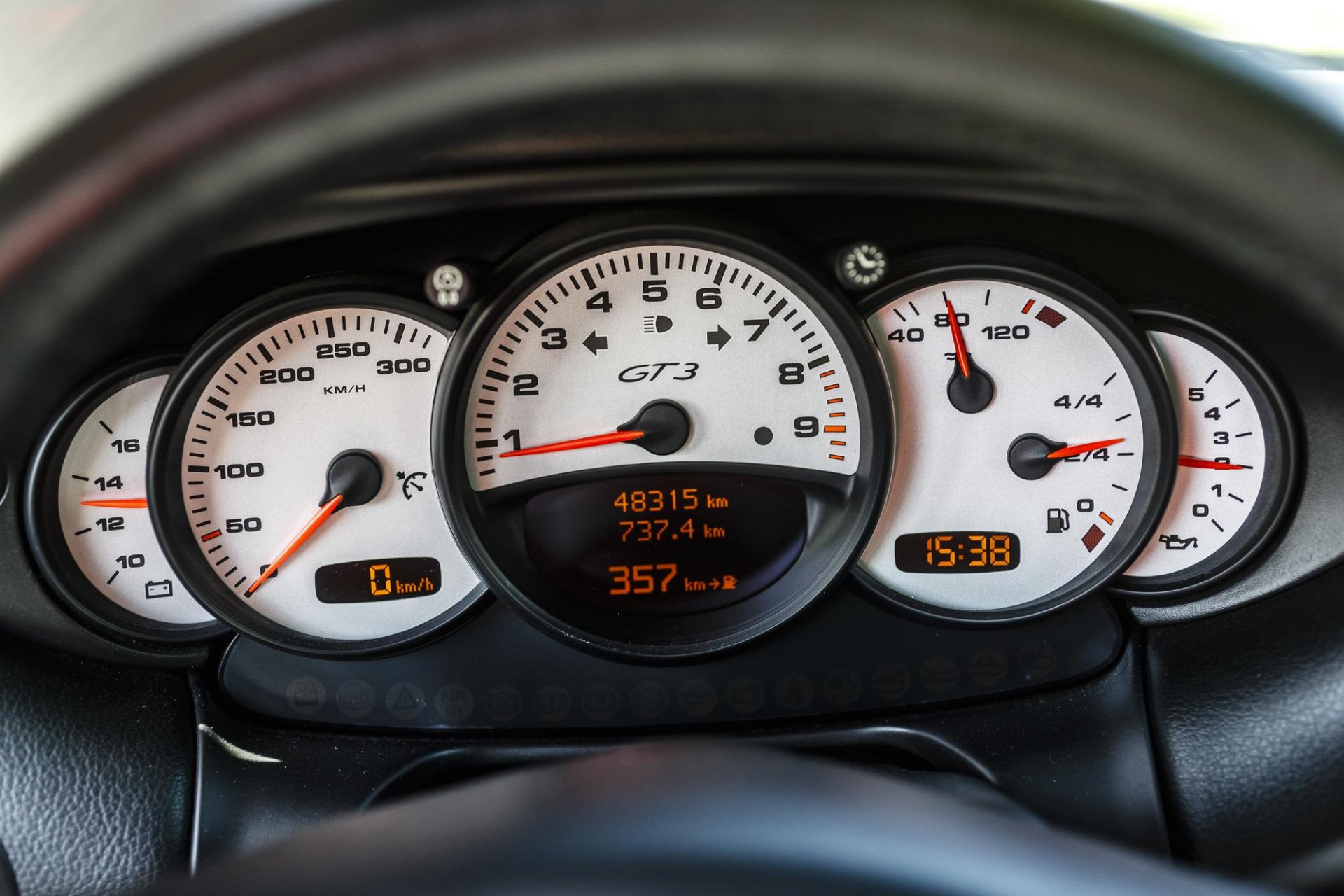
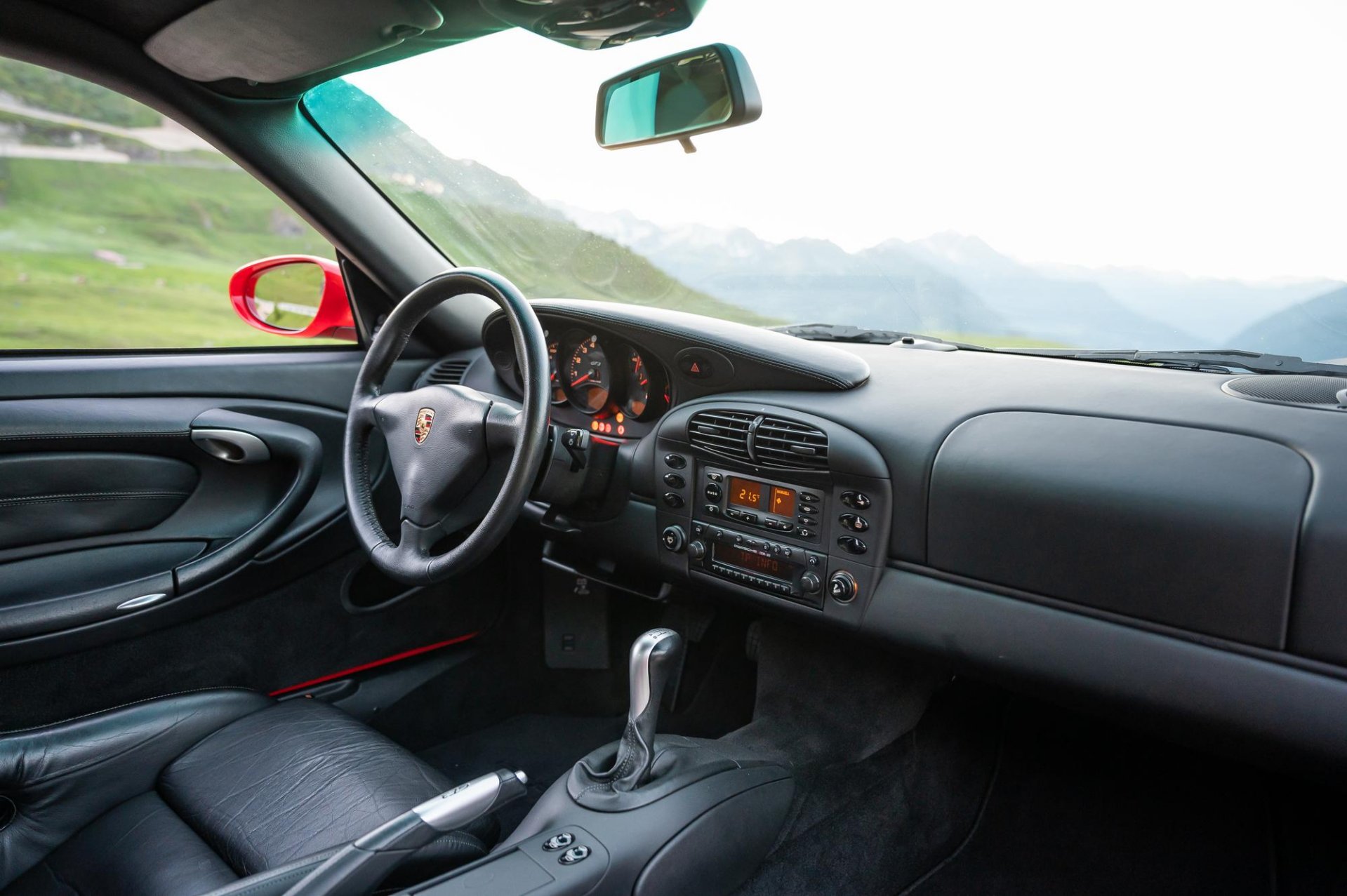
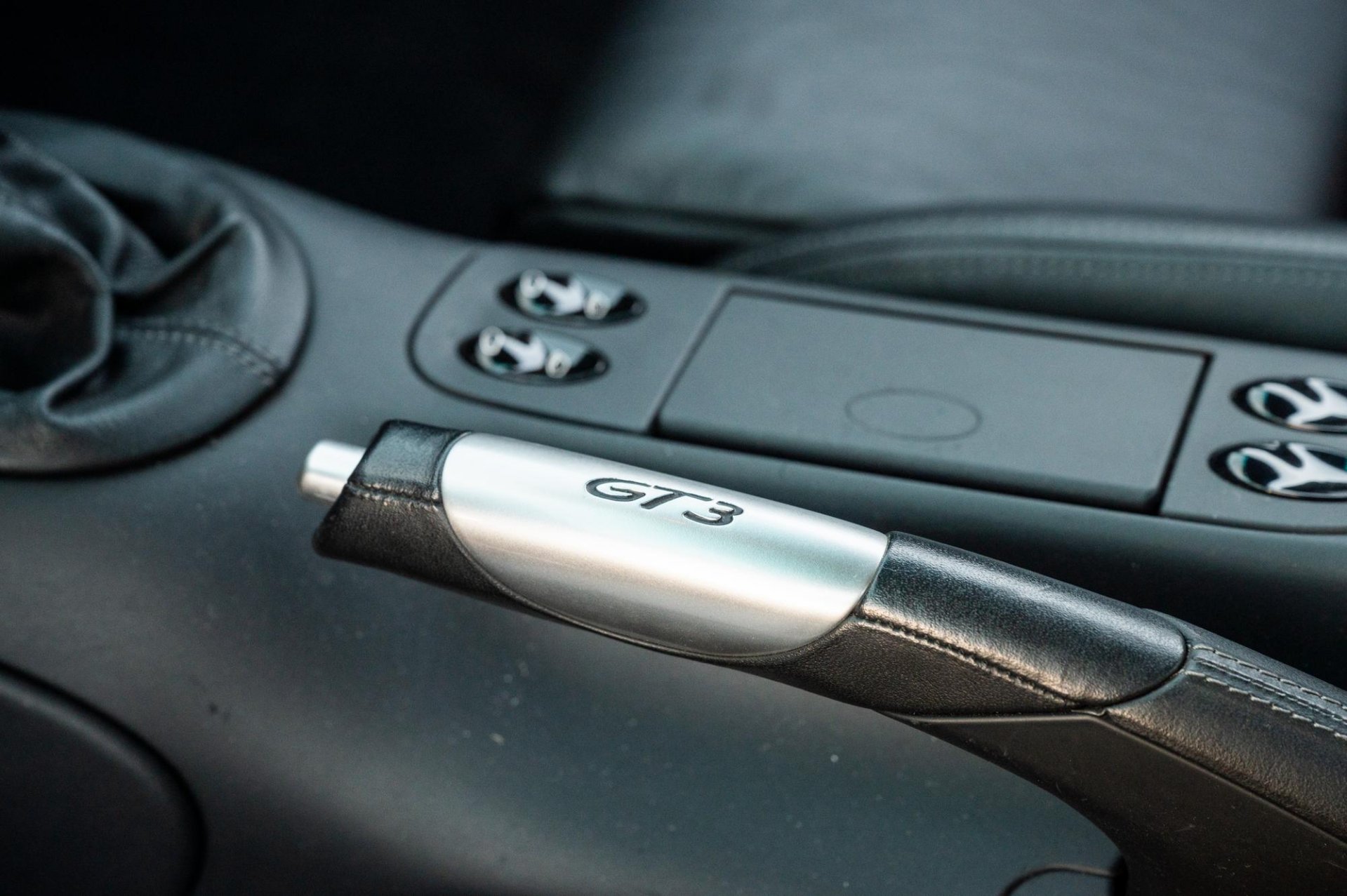
Rudimentary LCD screens in the instrument cluster relay the pertinent driver information below five analog gauges. Their arrangement centered around the large tachometer in the middle is one of the few trademarks carried forward. However, the binnacle they sit in is independent of the upper dashboard edge, marking new territory for the 911. Porsche’s first two generations of their infotainment system, PCM, were optional extras, as was a Bose audio system. As you might expect, plenty of other interior options added individuality, like carbon trim, stainless trim, body-color trim, wood trim, full leather upholstery in a handful of colors, different seats, and a different steering wheel. Really, though, no matter the options, the new-age styling was overpowering.
The 997 was a return to the air-cooled design with modern revisions. Straight lines and hard edges replaced the soft, "futuristic” look, returning the upmarket feel to the not-so-inexpensive car. Materials were improved all around, especially for the infotainment and climate control buttons. It’s a rather cluttered center stack, and regular use has proven to wear the surface off of the buttons, but tactility and visuals benefitted over the 996. The trim line through the middle of the dash remains, but the vents become just the slats set into the dash top instead of plastic caps on either end. Upholstery remained very similar throughout 997 production, with a handful of solid and two-tone schemes in varying amounts of leather.
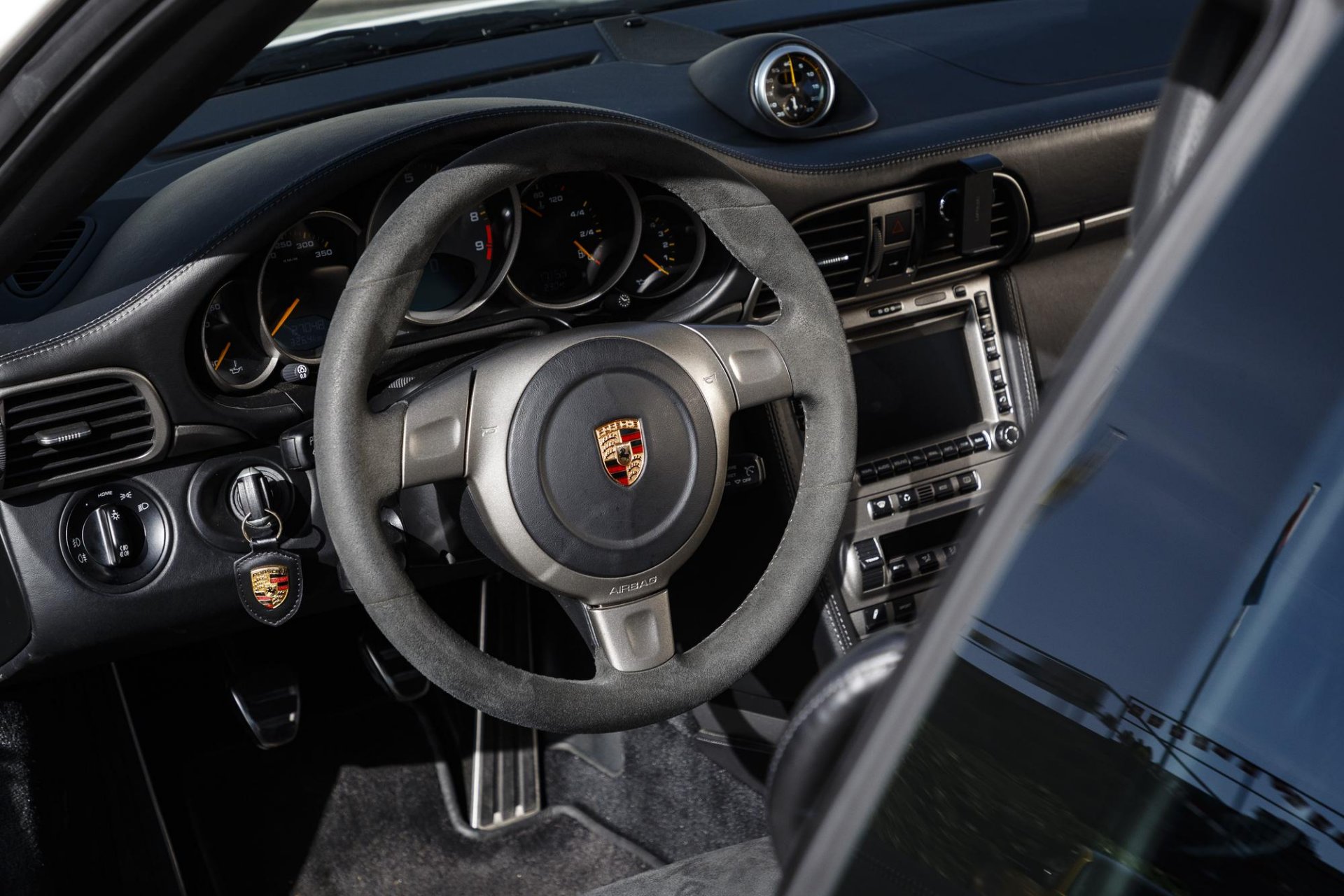
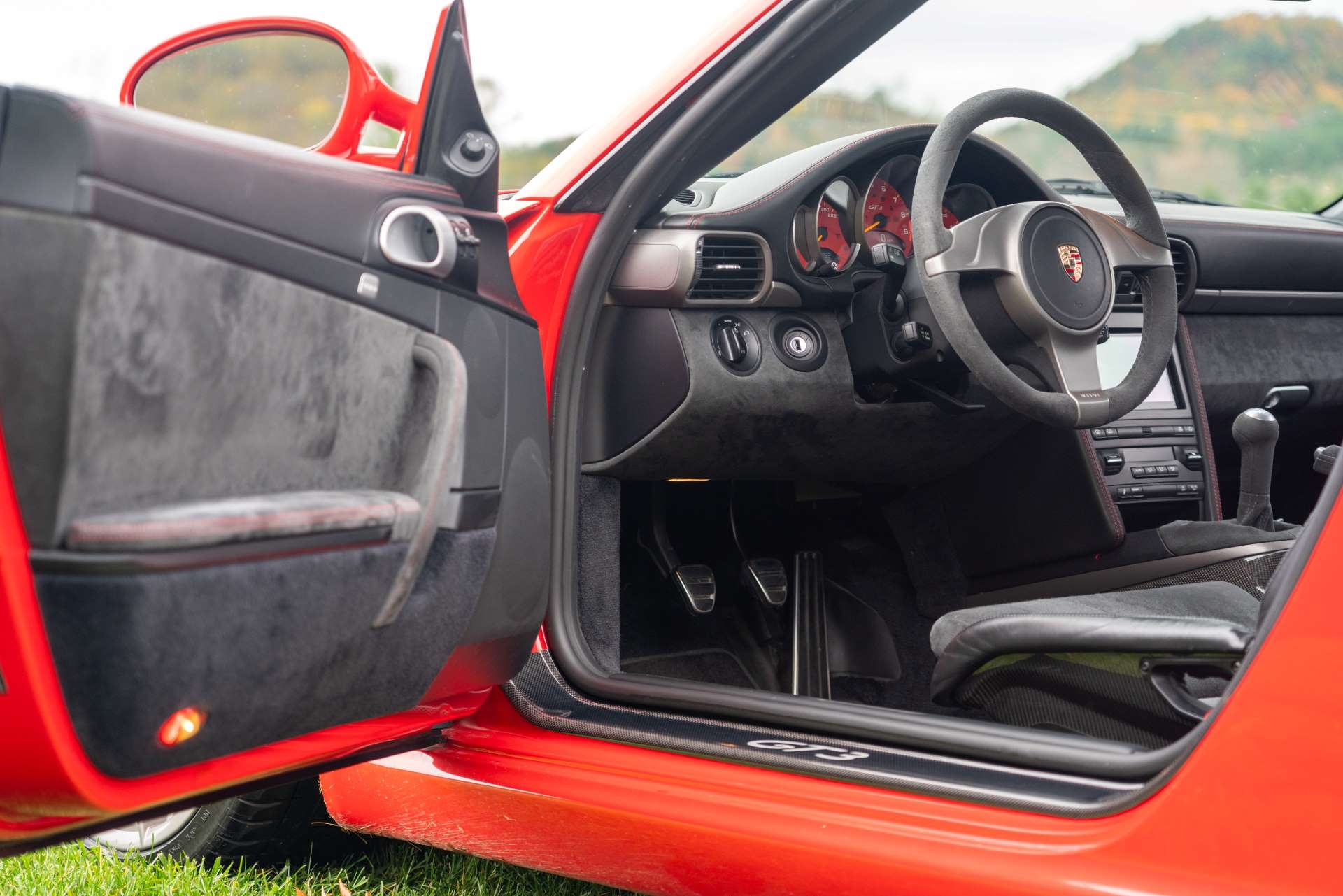
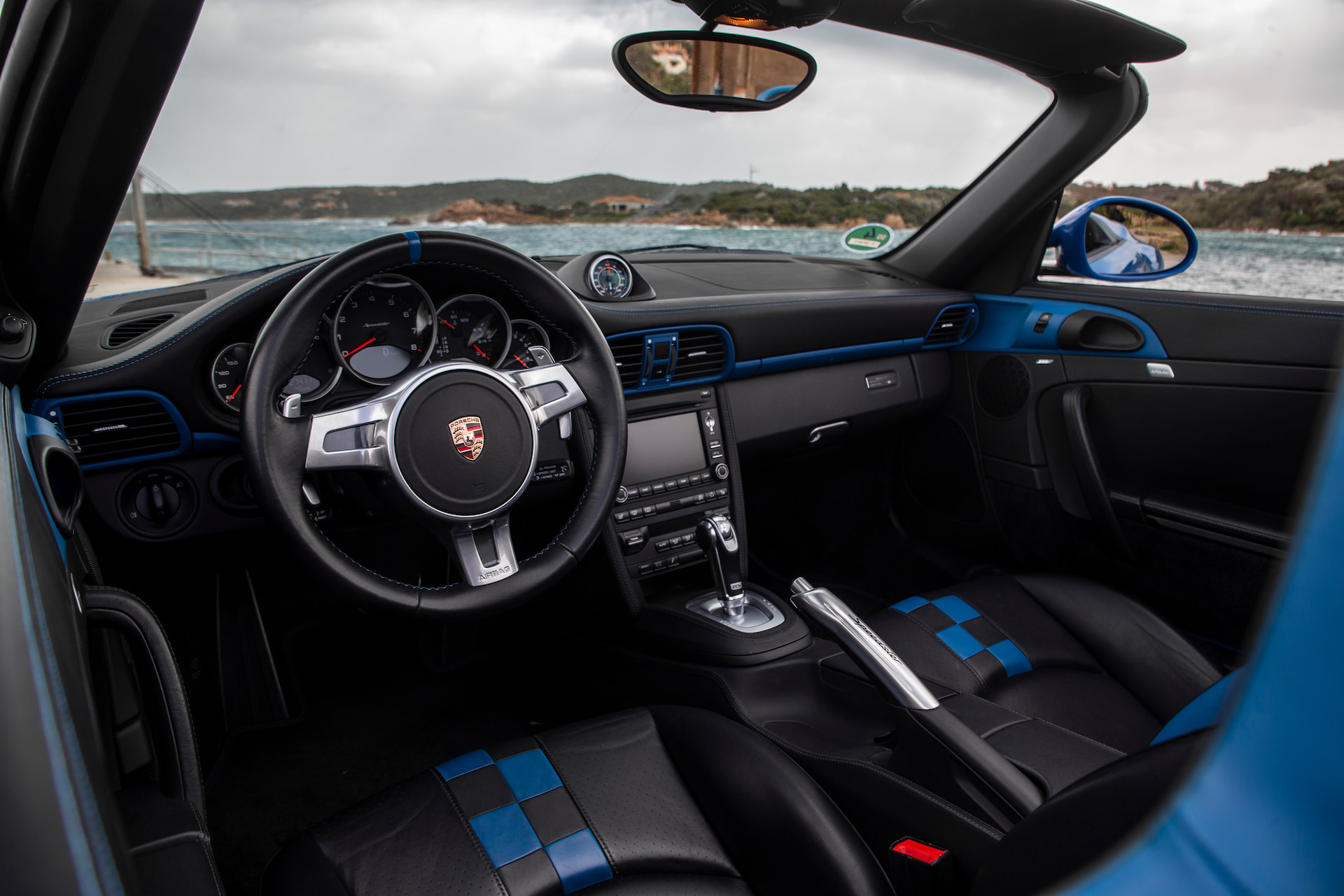
Alone, the 996 is a fine place to be, carrying charm and quality ergonomics. However, even if Porsche hadn’t improved their material, the 997 is the better place to sit. It’s easier on the eyes, feels upmarket, and has more modern features.
Porsche 996 vs. 997 Impressions
996
“Inside the familiar shape, there's a more spacious package, thanks to the wider body. The wheelbase is 3.1 inches longer, mostly ahead of the front seats. As a result, the front wheel wells don't push the front occupants' feet toward the center of the car as much, and the pedals are better aligned with the steering wheel, which is now attached to a telescoping column. With room for a proper dead pedal, the driving position is better than in any previous 911. Visibility remains excellent in all directions.” Csaba Csere - November 1997 - Car and Driver
“Traveling at the speed of three miles a minute is not to be recommended if you want to hang on to your driver's license. But that velocity is so gracefully achieved that you're always looking for any suitable stretch of blacktop. The 911 Turbo's performance is simply intoxicating.
And you don't have to work the six-speed gearbox constantly to get that sensation. So broad and strong is the torque spread that even in the very tall sixth gear, you can summon real thrust. Above 70 mph, you can leave the Turbo in high gear, forget the lower ratios, and still crush most rivals. Of course, dropping down a cog or two serves up even more blistering performance. Subjectively, this 911 feels closer in character to a big-capacity motorbike than a civilized supercar that weighs 3400 pounds.” Peter Robinson - 2000 - Car and Driver
997
“With each run up and down the road, I’m gaining in confidence and speed, discovering the outer limits of adhesion are appreciably higher than ever. Confidence turns to trust. Yes, yet again, Porsche has built a significantly faster 911. But that’s not really the 997’s achievement. This is also a better handling, more predictable – yes, more rewarding – 911, with a chassis poise that essentially refutes its tail-heavy weight bias. In these circumstances, tottering on the limit, the 996 gently bobbed the nose vertically. The 997 stays flatter, biting first at the nose, then sticking resolutely at both ends, the brakes smashing into the speed and seemingly unconcerned at their continual near-abuse.” June 2004 - Autocar
“Or set it to sport, which makes the computer even more tolerant of woolly driving, so tolerant that track day may pass without your touching it. The sport mode also firms up the electronically self-adjusting shocks, called Porsche Active Suspension Management. In normal mode, the system is downright supple, varying the valve settings to smooth out ripples. Push the sport button, or just drive faster; the computer reads either signal and turns up the shock resistance. No Porsche before this one has ridden so serenely while also supplying this level of body control.” Aaron Robinson - November 2004 - Car and Driver
“On paper, this new Turbo looks as if it will easily match the performance of exotics such as the Ferrari F430, Lamborghini Gallardo, and Aston Martin DB9 for about 70 percent of the price. At the same time, it offers a kid-friendly back seat and more everyday usability and comfort than most of those exotics. That combination of qualities has worked well for 911 Turbos since the model's introduction 30 years ago, and it should continue to satisfy fans of the ultimate 911.” Jurgen Zoellter - March 2006 - Car and Driver
Porsche 996 vs. 997 Pricing
Although the cars are similar, their pricing isn’t. Even the early 997s, featuring the M96 and M97 engines and all their potential issues, command more than a comparative 996. None of the 996s variants, from the Carrera to a GT2, will bring more than a 997 with relative condition and specification. Beyond that distinction, both generations can get six figures without a hassle.
At the bottom of the pricing tier is the worst-of-the-worst running 996. High-mileage cabriolets in common colors with poor history and a Tiptronic are as cheap as they get but offer the chance at redemption with asking prices floating around the $10,000 mark. Expect little service history, poor interior and exterior quality, and unperformed maintenance. Stepping up to a solid driver-quality car pushes the asking price near $20,000. These should have the IMS bearing completed with a recent maintenance history and will likely have OK to good paint and interior wear. However, the 4S and Turbo models will still be out of range.
The former variant starts in the mid-twenties, thanks to its wider body and larger brakes. Many consider it to be the best daily-driveable 996 Carrera variant. Well-kept examples will fetch up to about forty grand, depending on spec. Moving up to the Turbo moves the asking price minimum to the peak of the C4S range, while low-mile examples will break the $100,000 barrier.
Pricing at the bottom of the 997 market sits right at about $30,000. Rougher examples can be found for a bit less but are tough to find available for long. Sub-40,000-mile examples push asking prices into the $60,000 range, essentially topping the 997.1 Carrera market. From there, the .1 Turbo models come into play. The tiptronics and cabriolets are the least valuable examples, so expect Coupes with manual transmissions and good specs to push $120,000. 997.2 models currently bottom out in the mid-forties. Exclusive GTS variants or those with minimal mileage and attractive options will pull over $100,000 grand. The Turbo starts peaks around twenty grand higher than a similarly equipped and driven Carrera.
That about wraps up this dive into the differences between the Porsche 996 and 997. While we don’t know what the future holds for these specific models as the world moves away from oil, FCP Euro is proud to continue supporting them with the best quality parts and an unbeatable Lifetime Replacement Guarantee. Stay tuned to our DIY Blog and YouTube channel for more great content. Thanks for reading!


